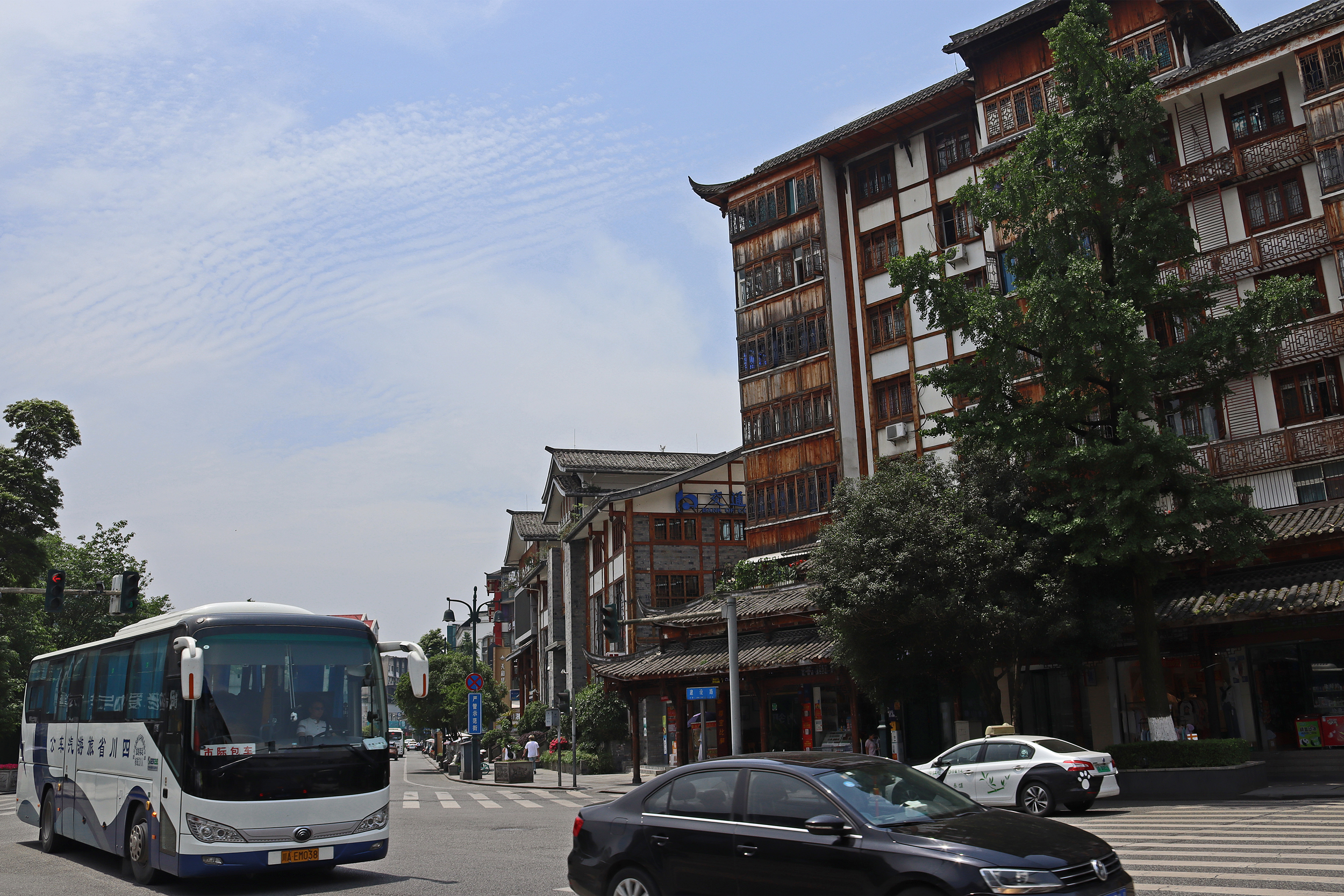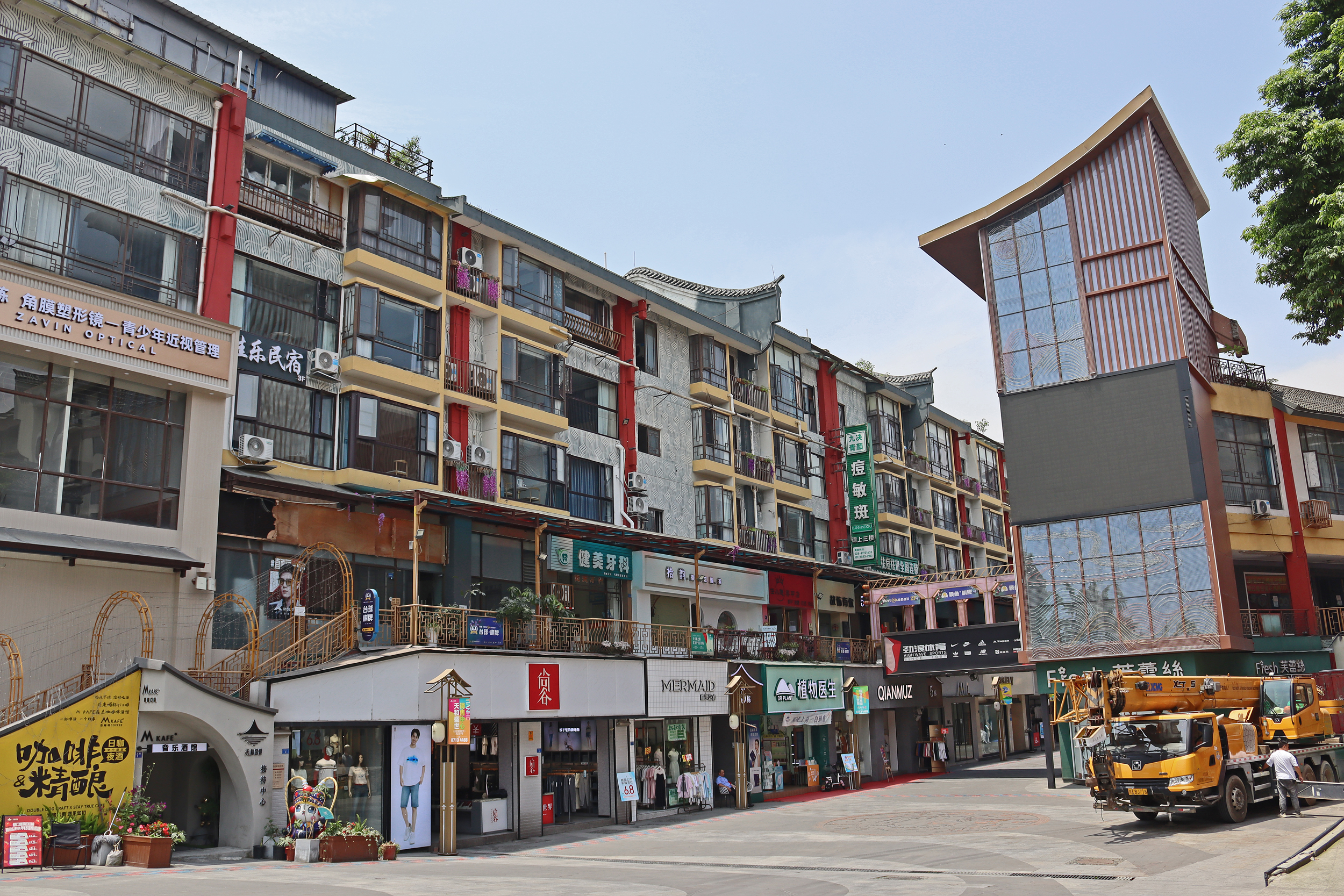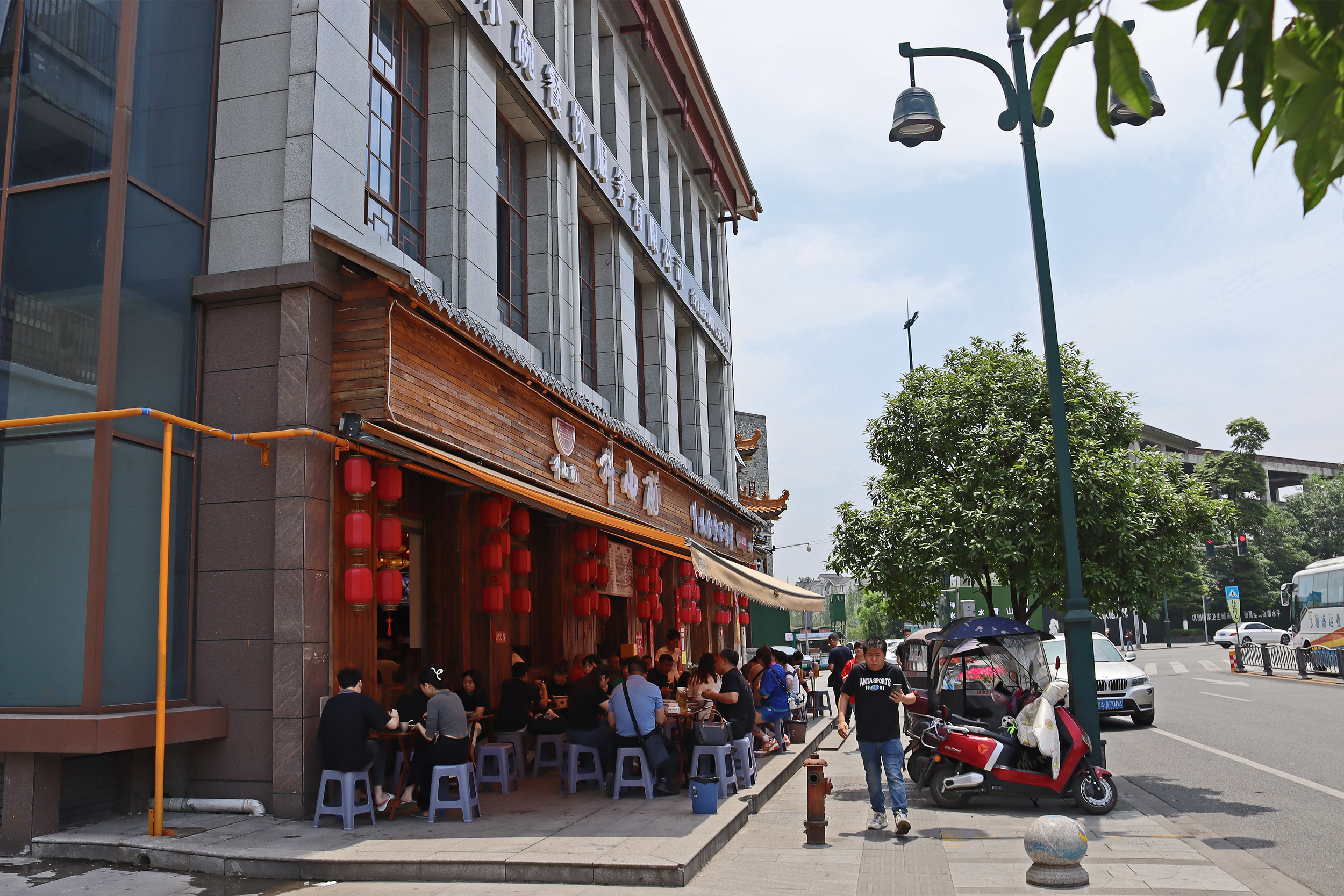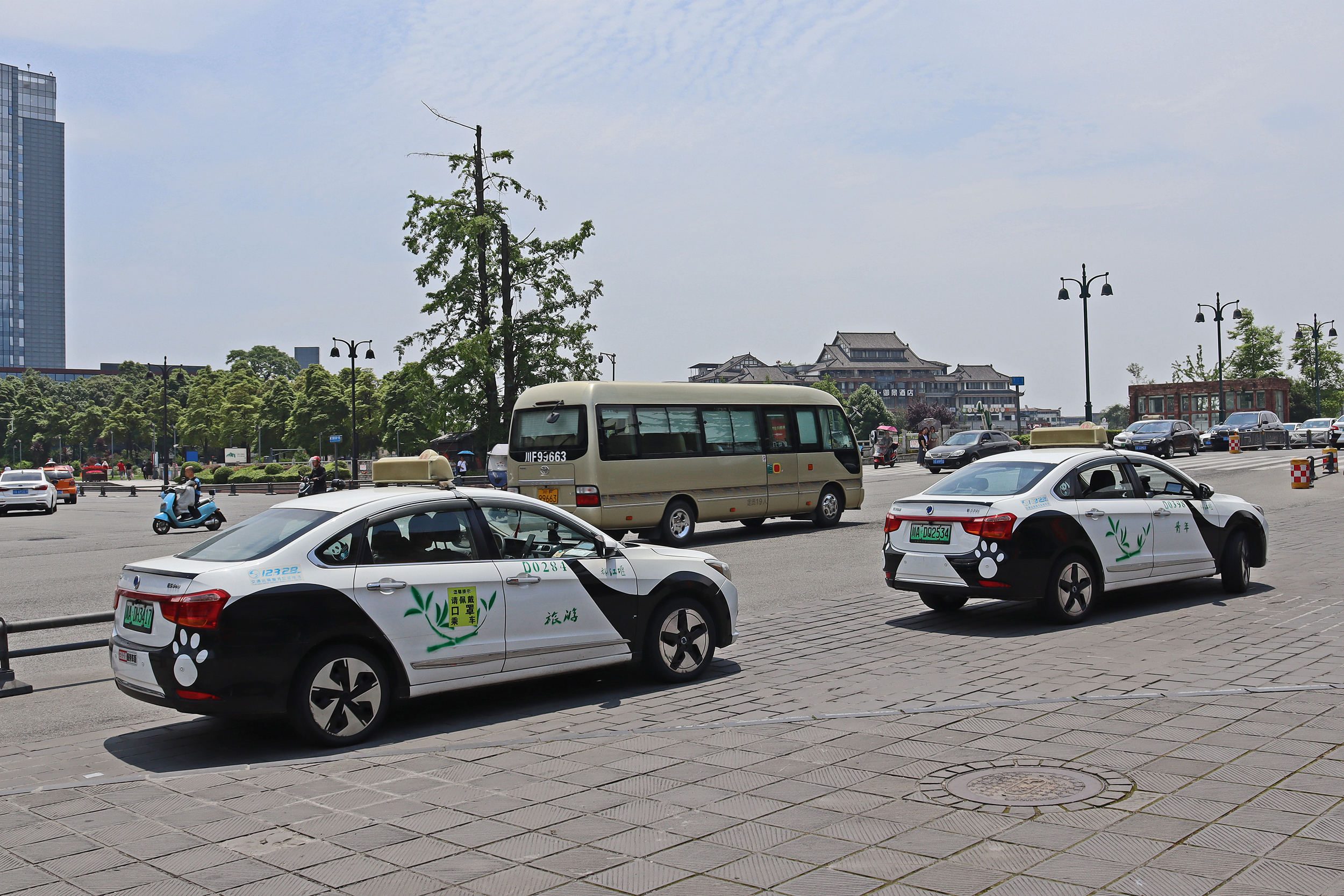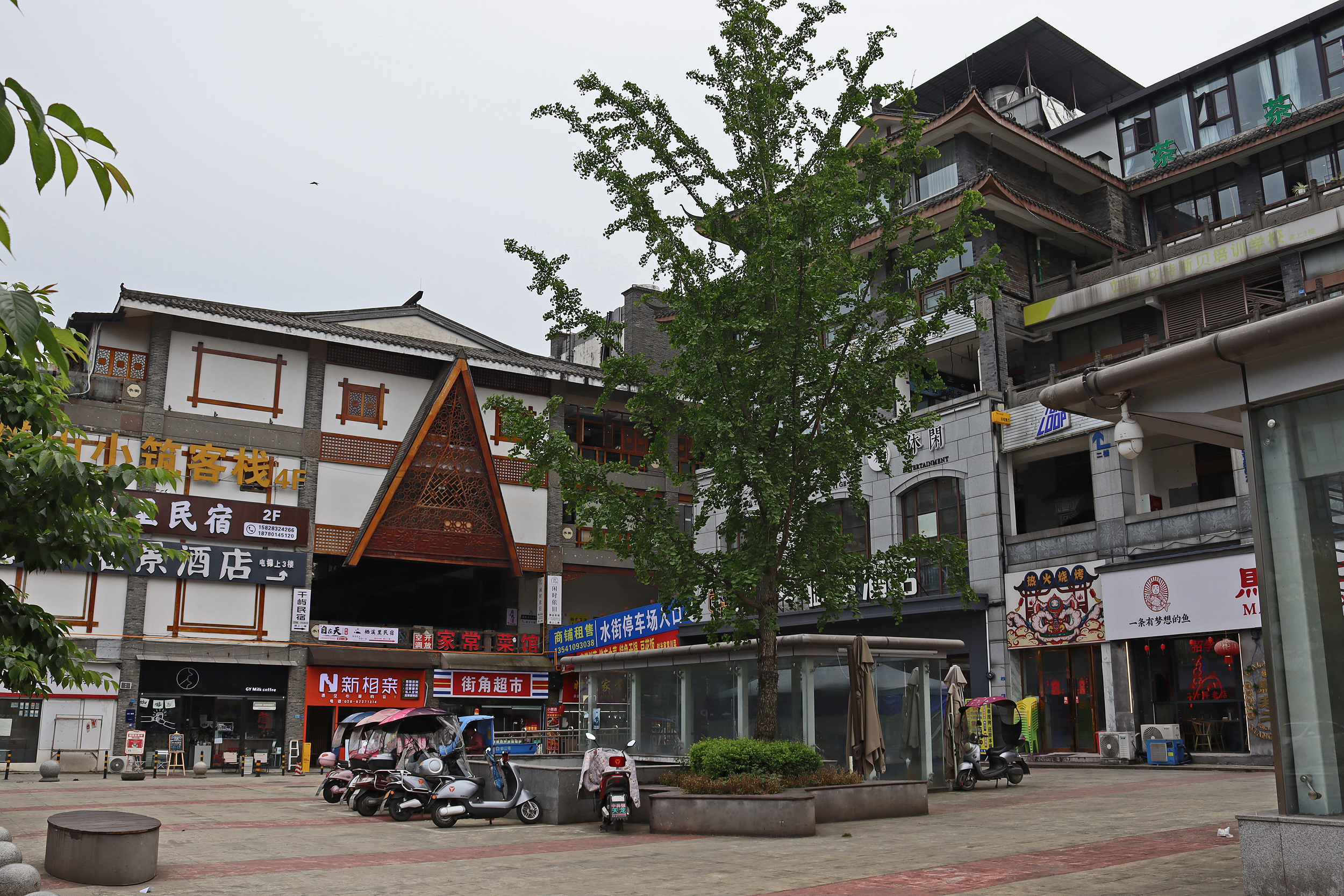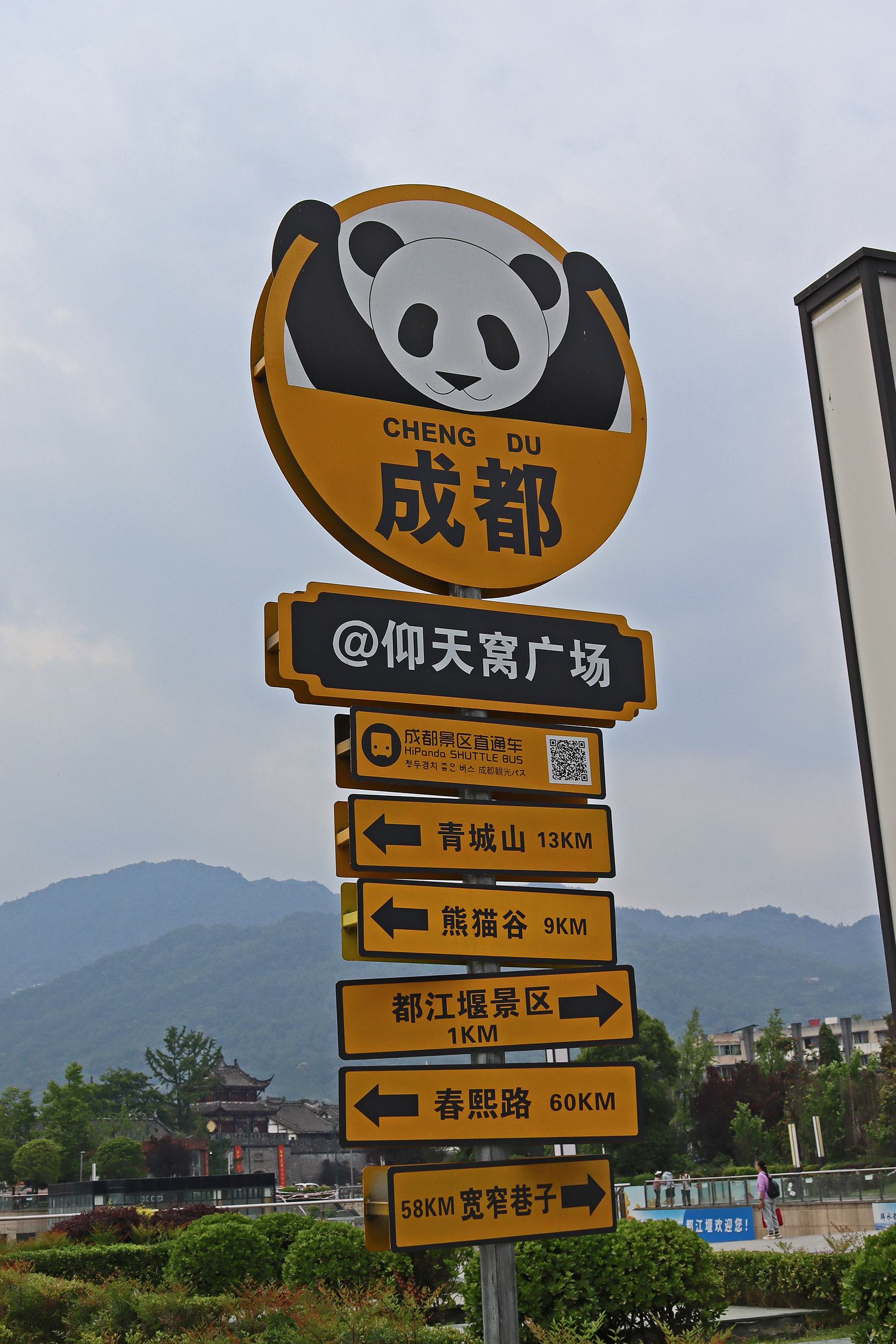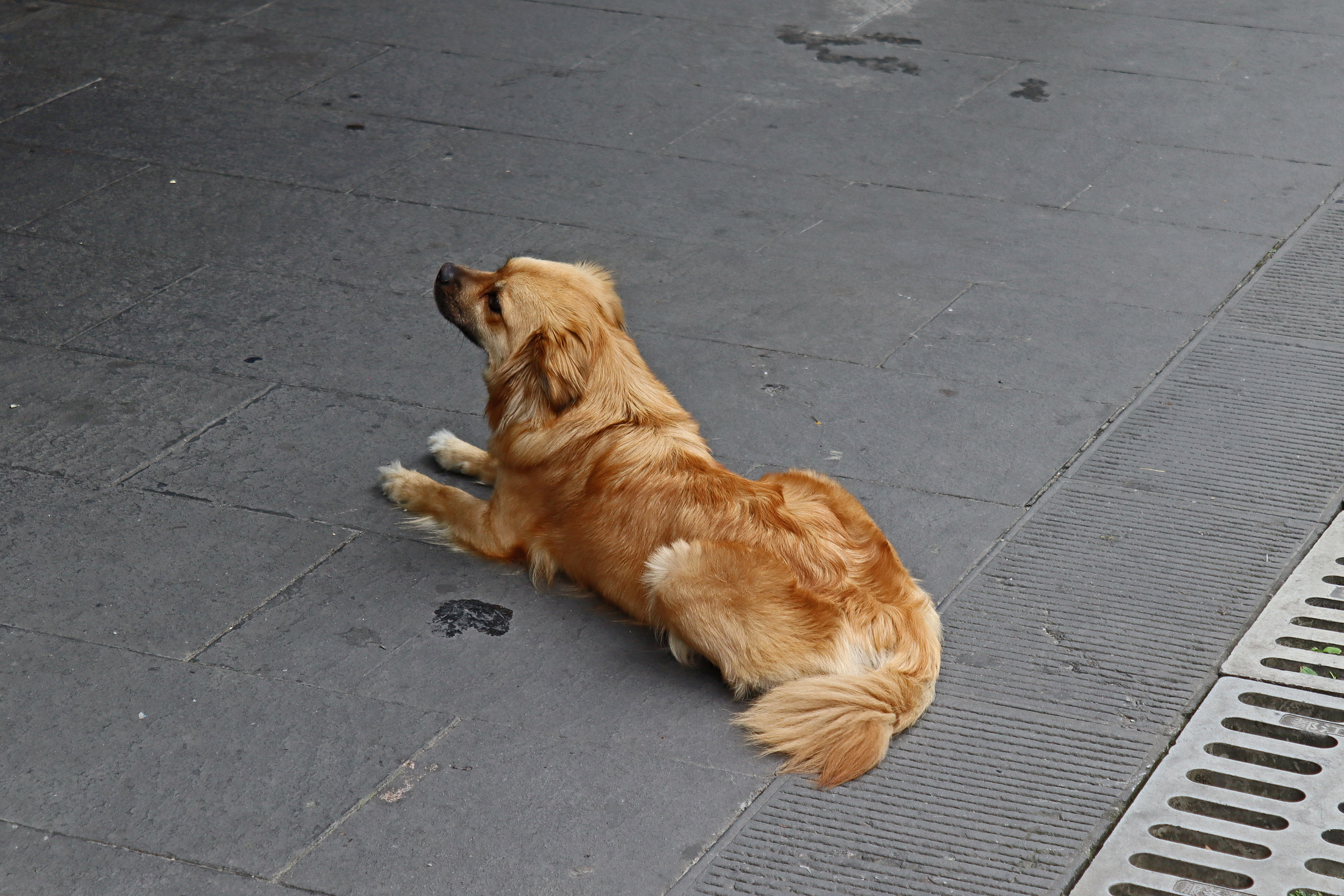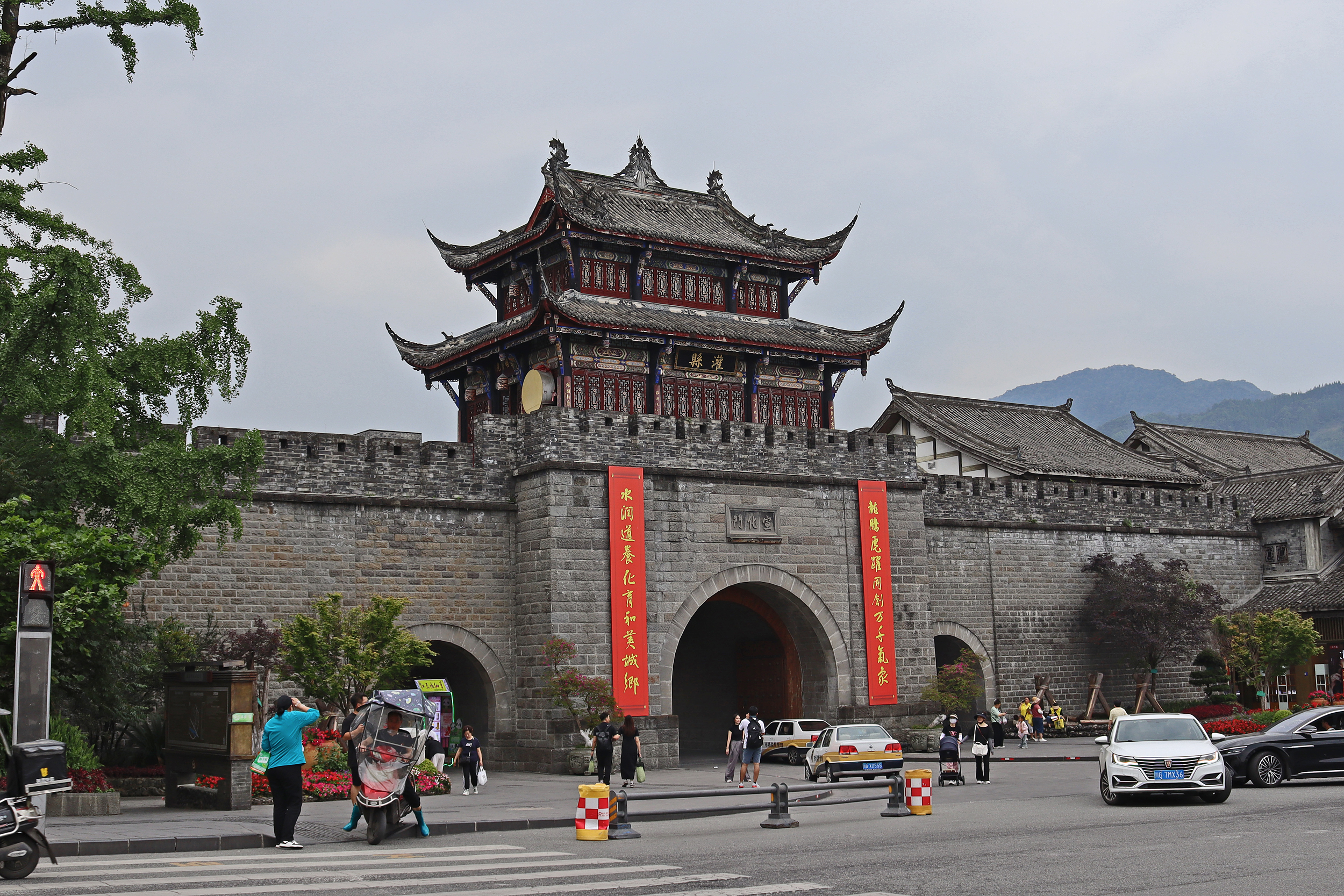With a lot of time in the Dujiangyan area, and the panda bases of course only open until the early evening, I had plenty of afternoon/evening time to explore Dujiangyan City properly for the first time. I loved doing this and really got my bearings and the geography of the city – my visits in 2016 and 2017 were very brief and with groups/being taken around to places so it was hard to get a feel for it then. Overall, it felt like a lovely laid back city, and not super large – easy to walk around the main tourist sights and also explore the local way of life there. I really enjoyed it and would definitely return again for a stay. It’s a great place to base yourself for a few days of panda-viewing, with the Dujiangyan Panda Base and Panda Valley both 20-30 minute drives away from the main city centre, and the Wolong Shenshuping Base just an hour into the mountains. Plus it’s only an hour from Chengdu (and the Chengdu Panda Base) by car, or a quick 20 minute train ride (although the station for this train is a little outside the Chengdu city centre) – so it’s very convenient for fellow panda fans!
The famous ‘selfie panda’
Since 2021, a huge selfie-taking giant panda sculpture has had a home in the middle of Dujiangyan and it’s a super popular spot – I was excited to finally see it myself! What’s funny is on my first trip to Dujiangyan back in 2016 I stayed in a Holiday Inn (no longer listed online) and took only 3 pictures while I was there and it was the view from the window – turns out I have pictures of the construction of this square and the multi-layered shopping/dining area at the far end of the panda! I had been spending a lot of time trying to figure out where this hotel had been and I have finally solved it^ I think I was too much in shock that I was actually *there* in China/Chengdu/Dujiangyan on that first trip to really take anything in at the time XD Anyway, of course, this spot is a very popular one, who wouldn’t want a selfie with a selfie taking panda?! On this visit, the panda’s phone wasn’t working, but you can scan a QR code, and can (when working) get it to take a selfie and you’ll be in the background standing by the panda’s head. This is such a fun idea and I’m sure is popular. There were quite a few people around the square on the few occasions that I was there, but it was never super busy – I was only there on weekdays though, so weekends and holidays will surely be busier, but it was easy to get in and get pictures without too many other people. The square has a few coffee places and some souvenir sellers around as well, but overall has really nice chill vibes and would definitely be a nice place to hang out on an evening. P.s. I really love those mountain views behind!
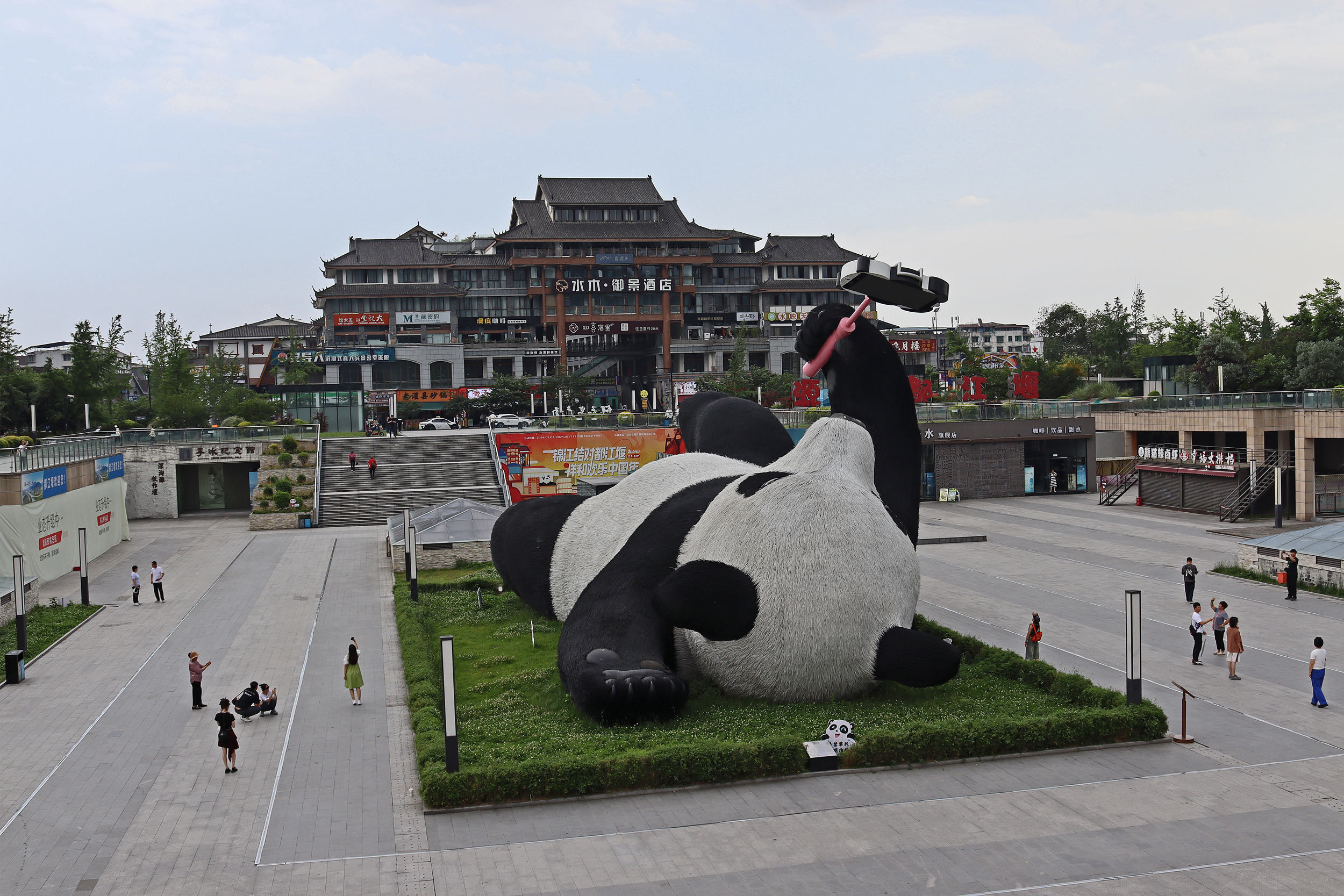


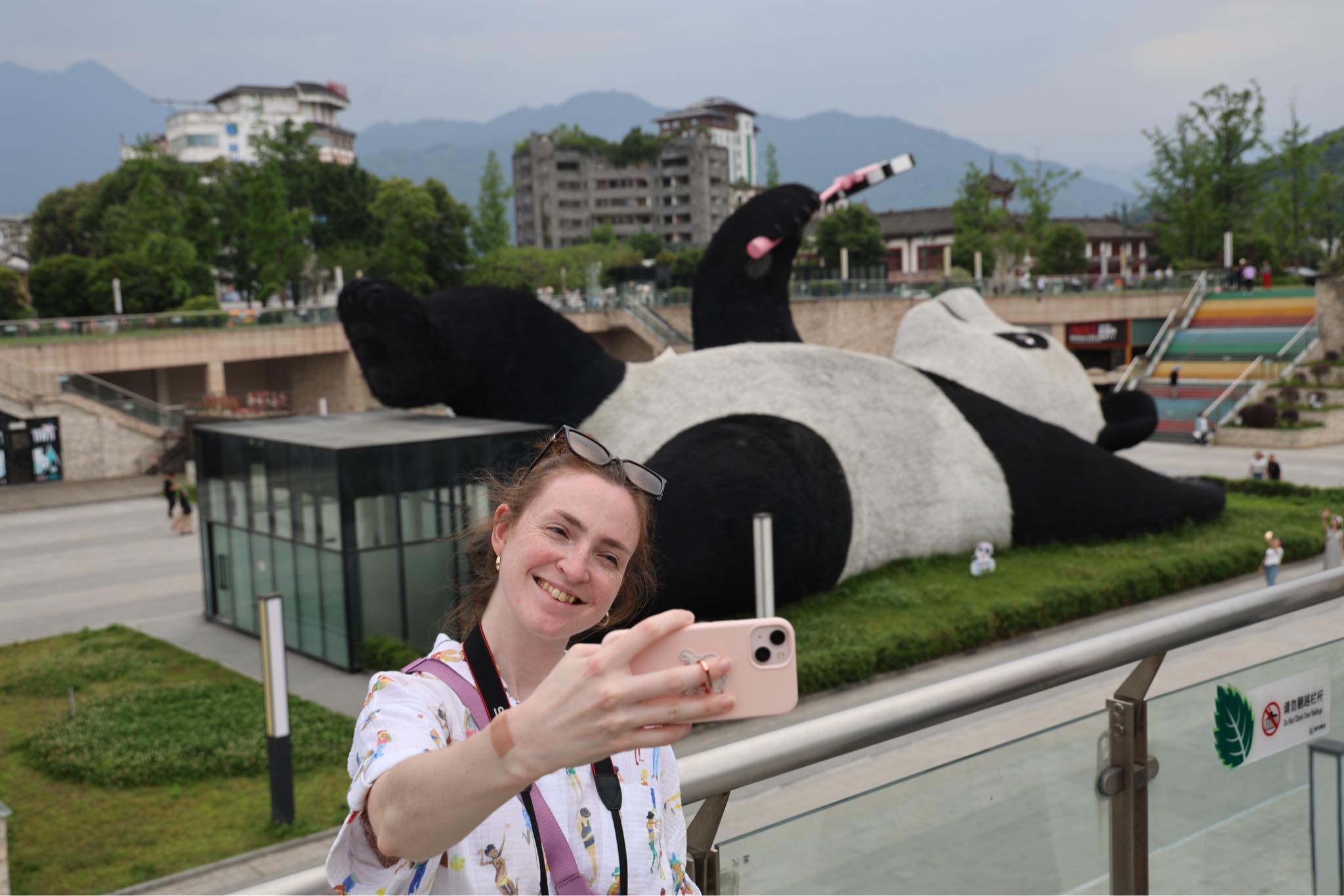
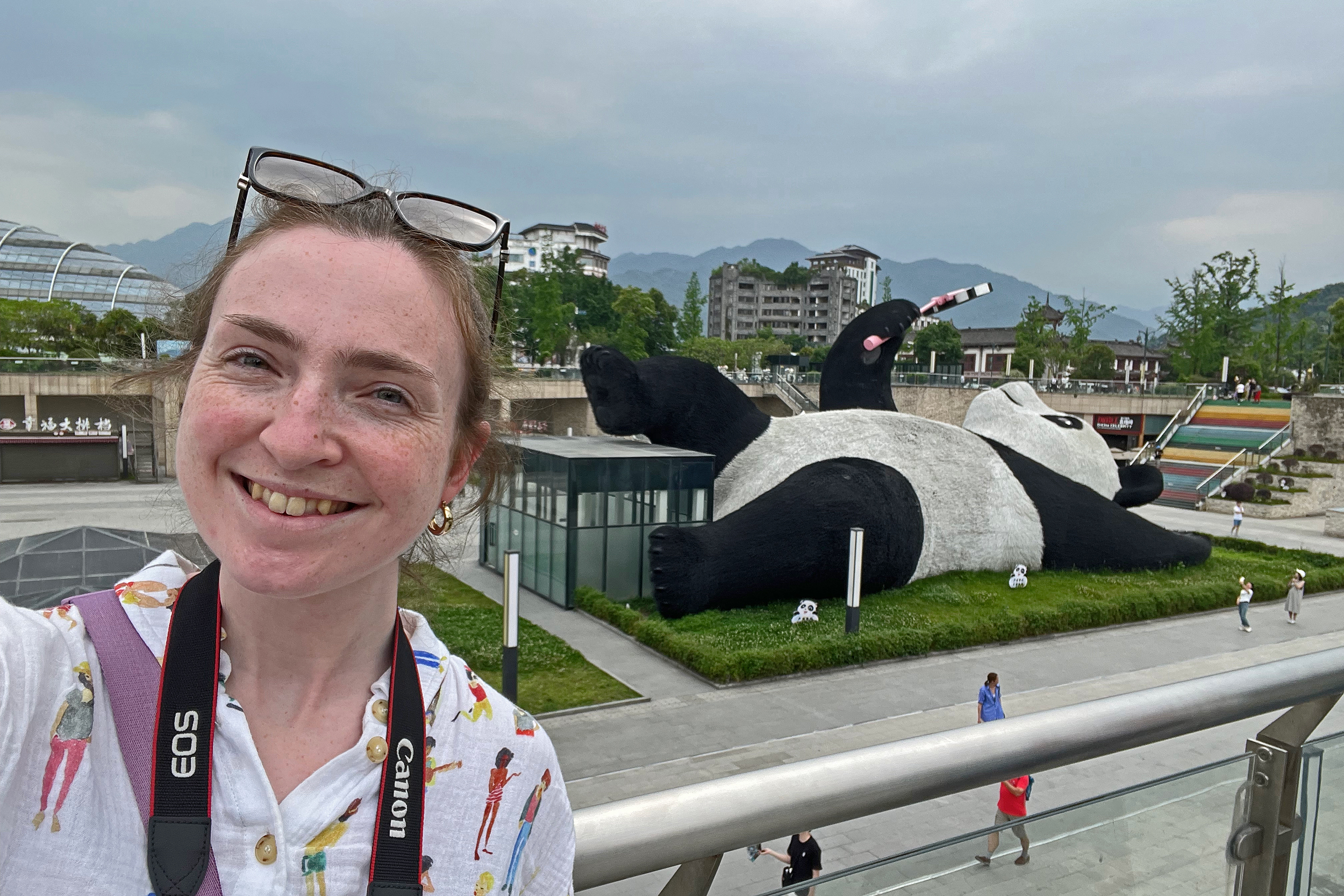
The ancient city
The Dujiangyan ancient city is a hotspot here, and you can walk around ancient-looking streets and alleyways, enjoying shopping with many (mainly panda) souvenirs to be had, snacks and many river-side bars to relax in. It was definitely a place aimed at tourists but I still liked wandering the streets because you could take a few turns and easily be lost in the maze and discover something hidden away from the main thoroughfare. From here you can get to all of the main bridges with beautiful intricate decoration that cross the river and you can see the ‘blue tears’ at night, and also easily get the the Irrigation System. One of the main gates to the city is also right across the road from the selfie panda, so nothing is too difficult to find.
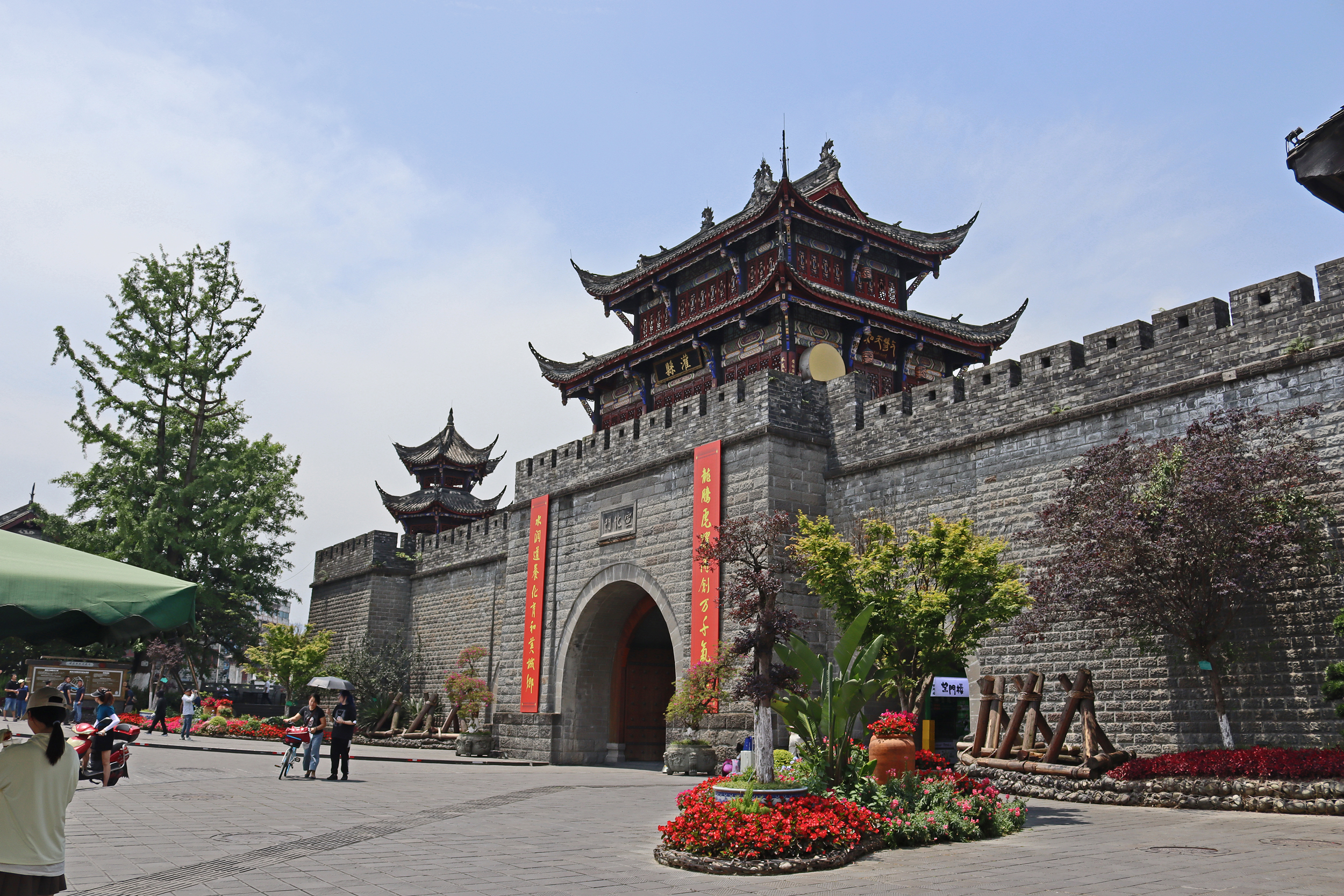
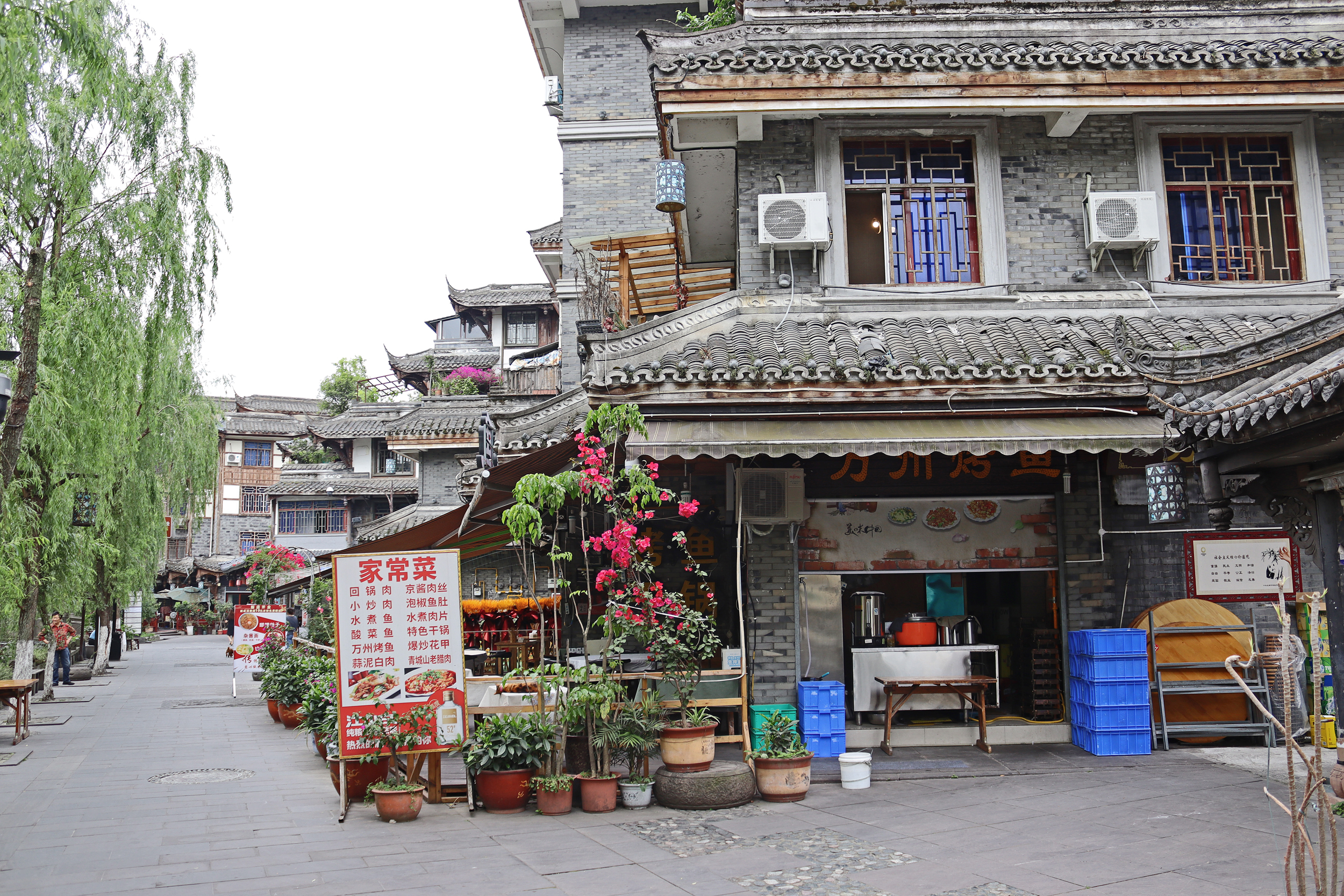
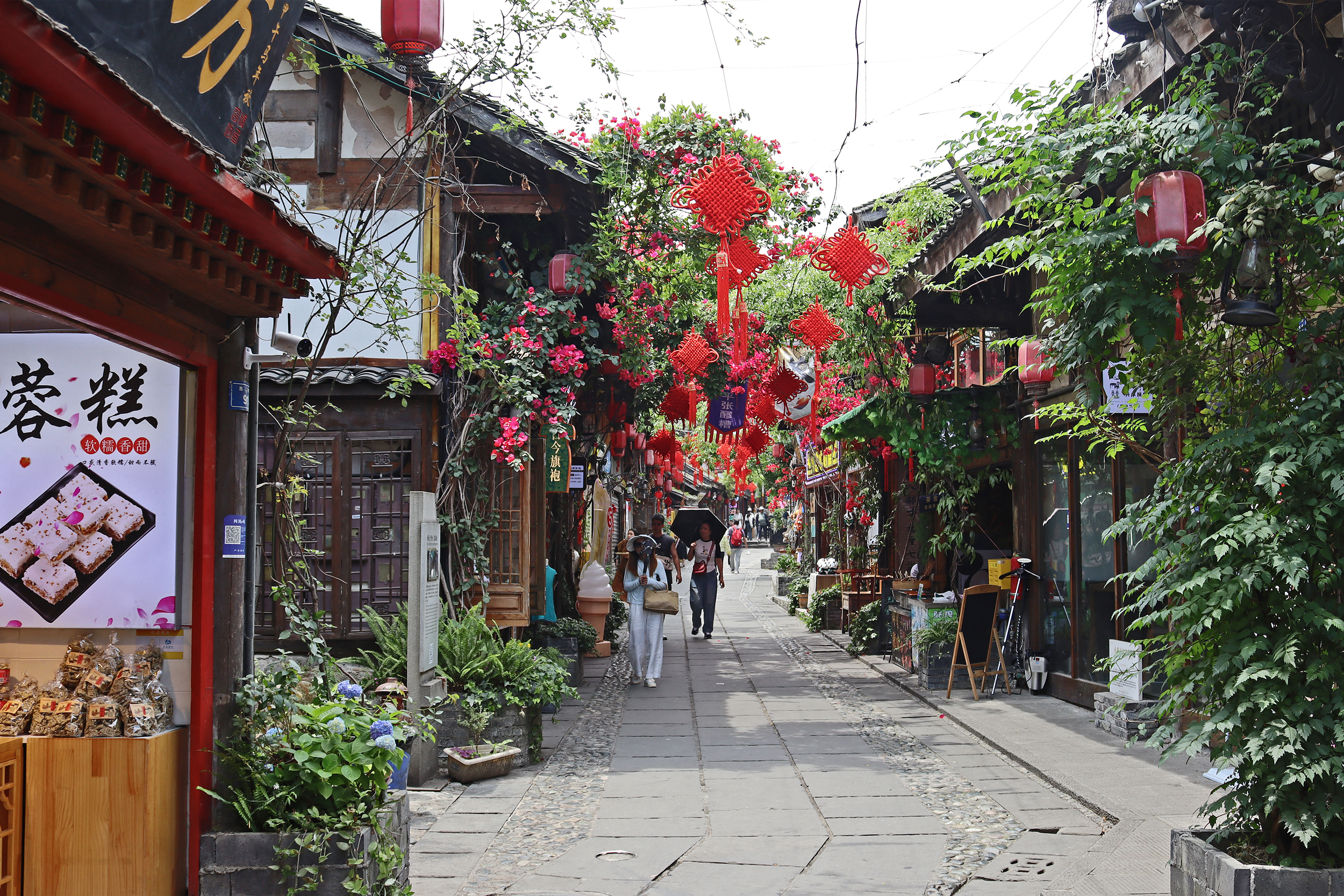
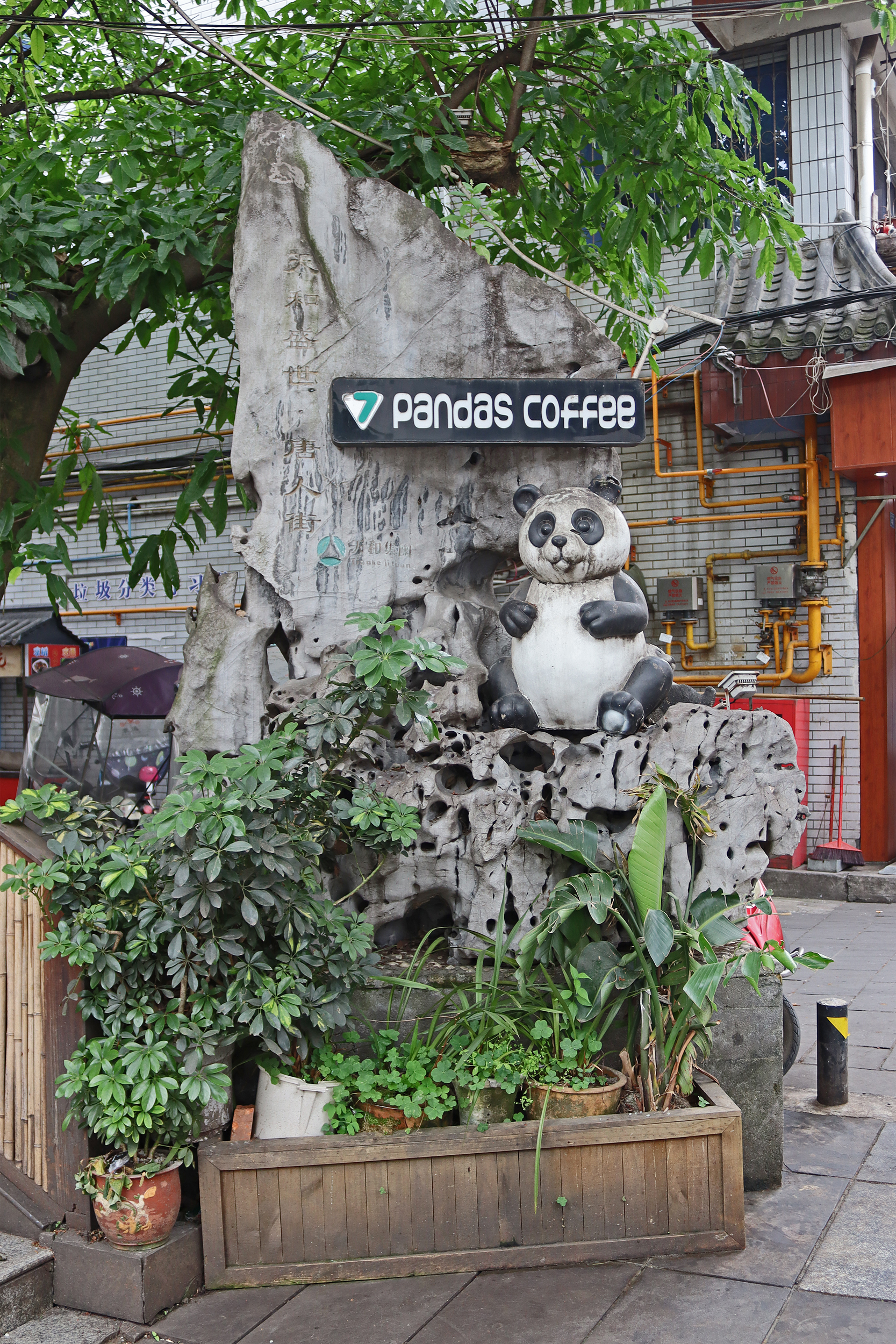


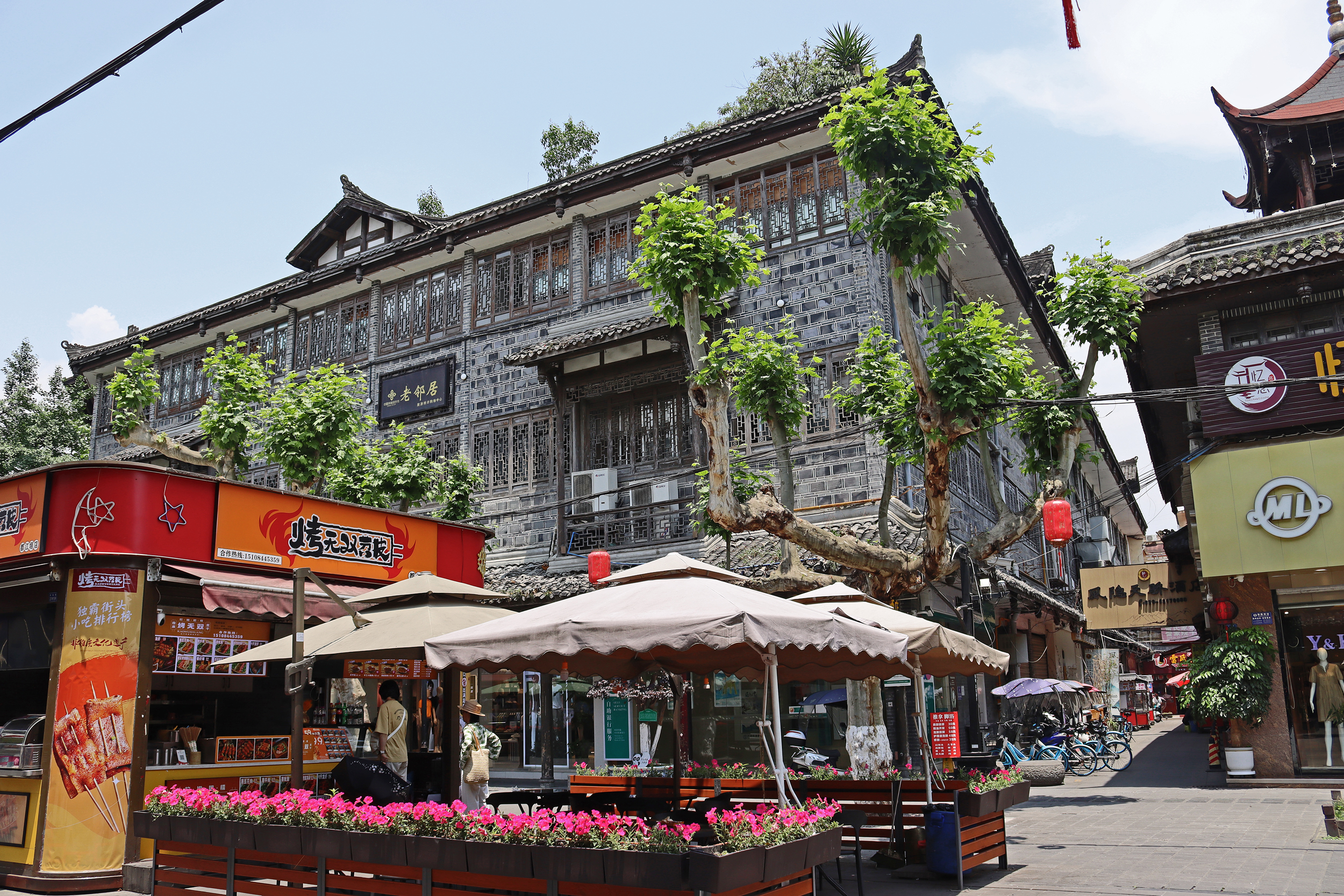
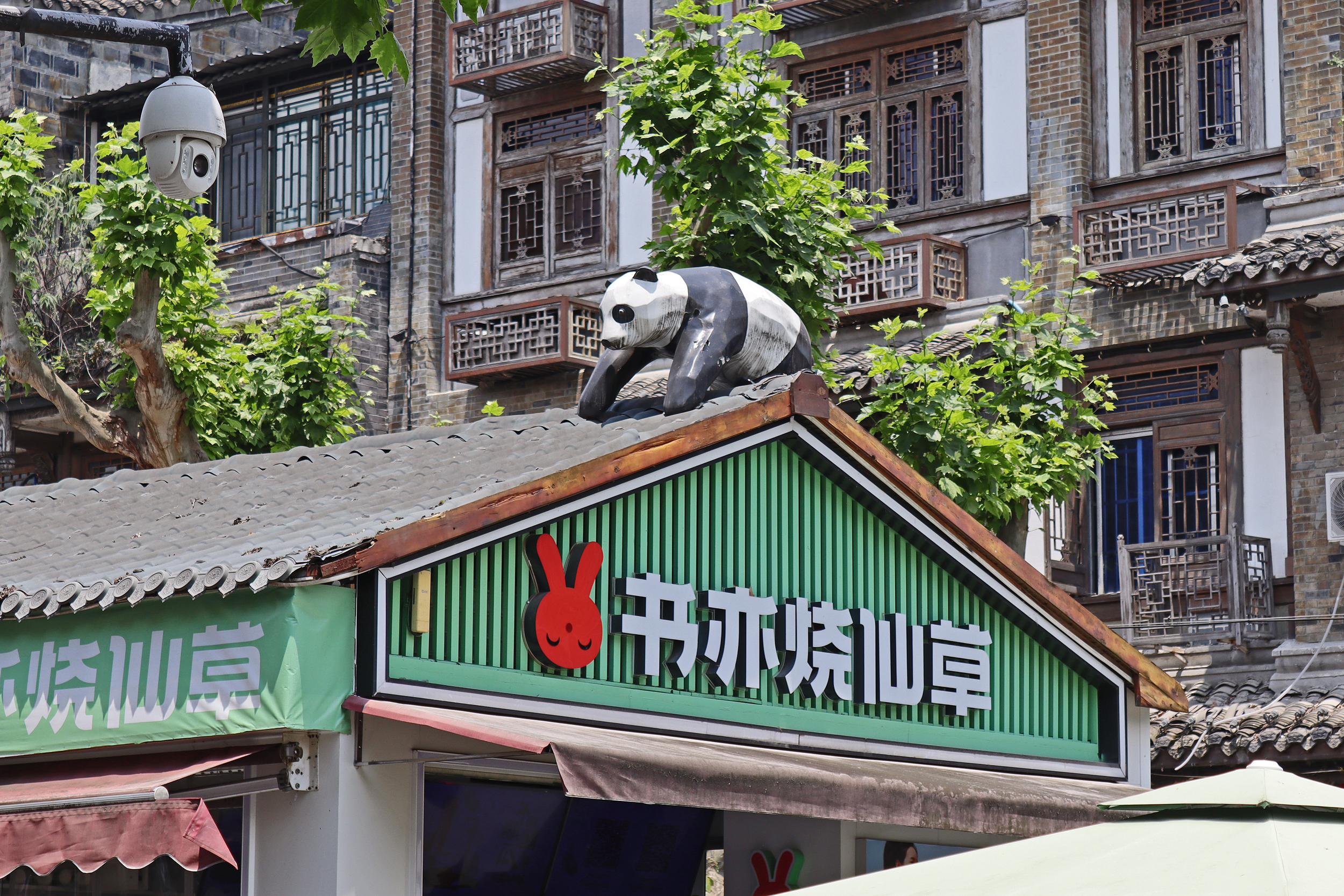


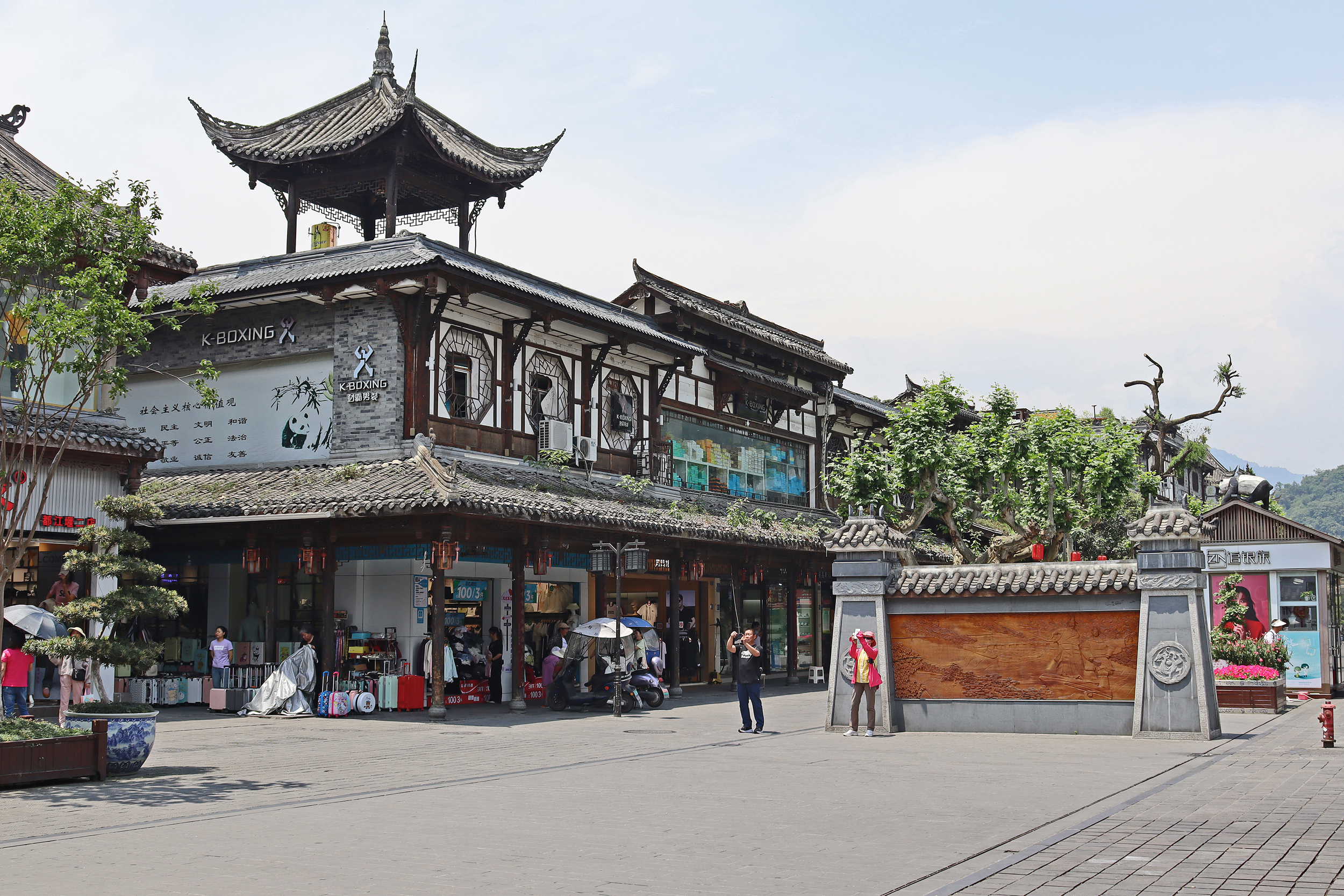
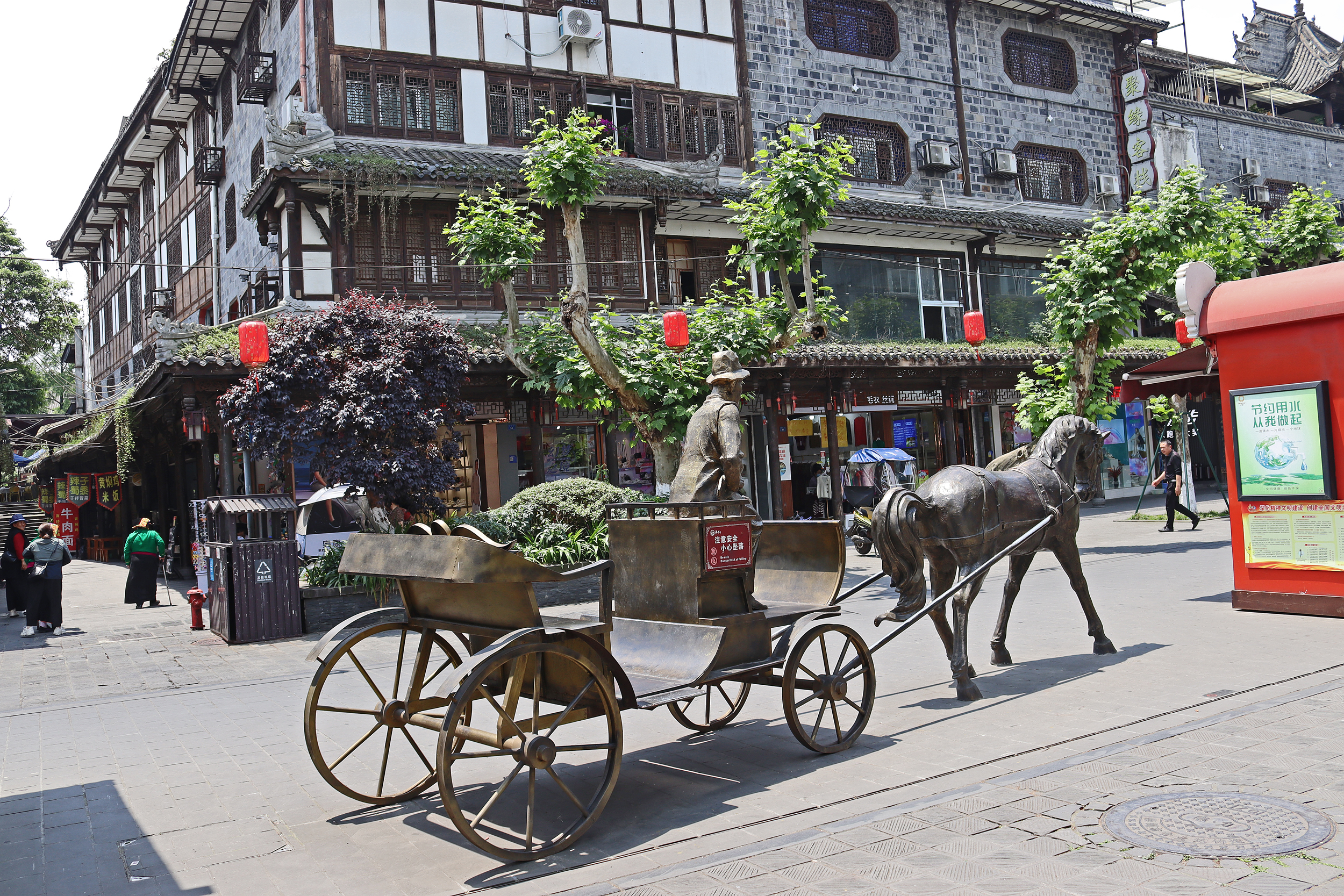
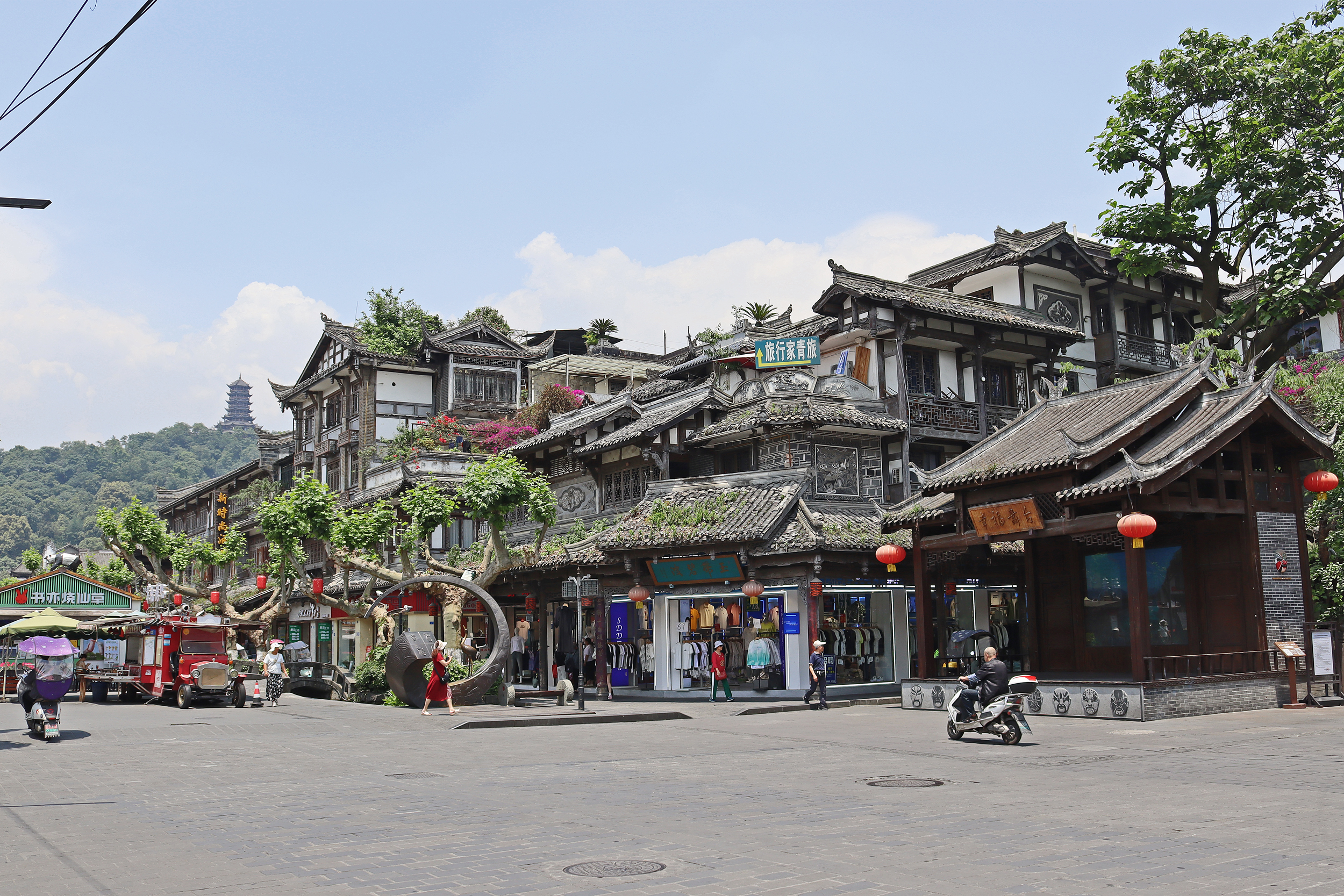
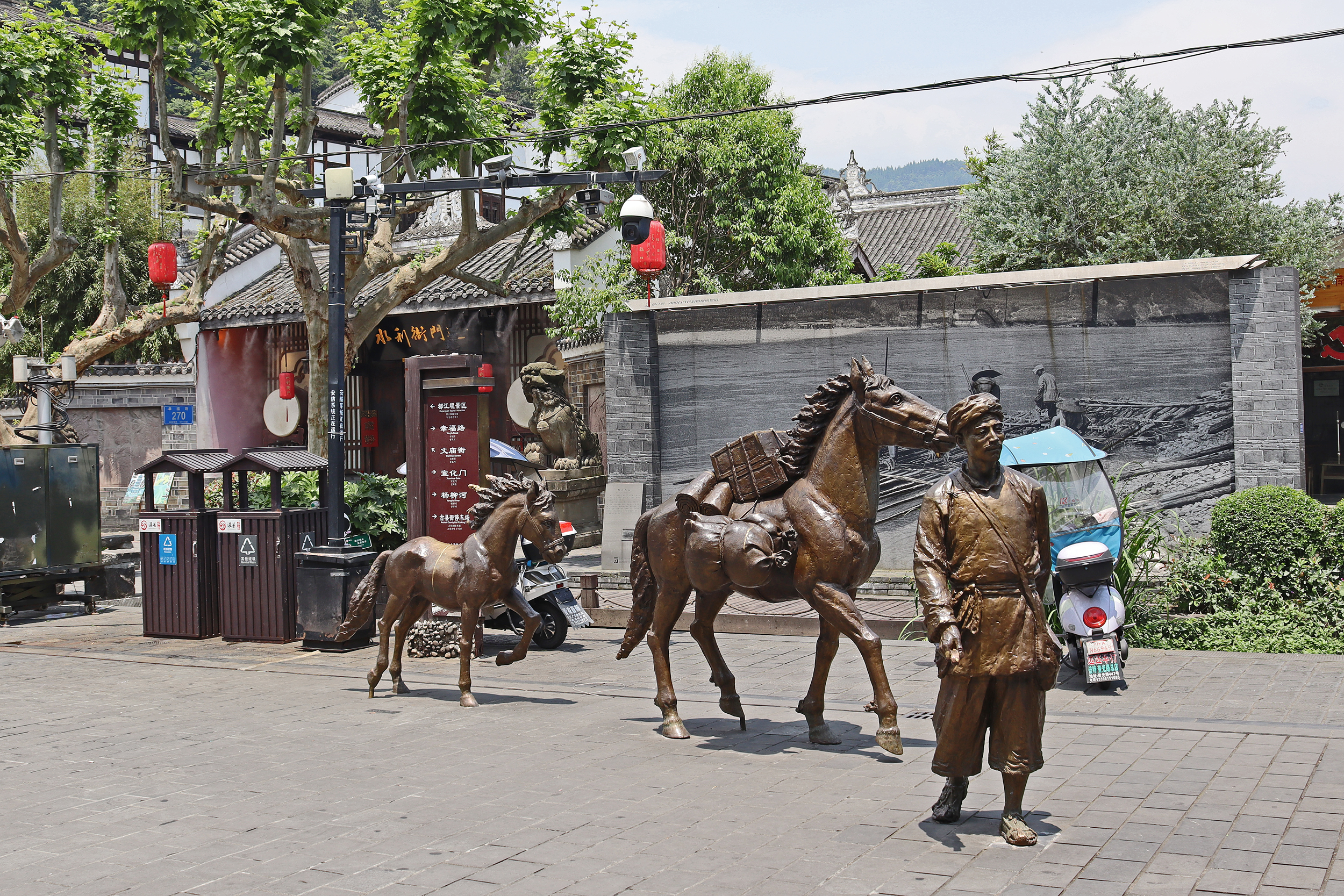
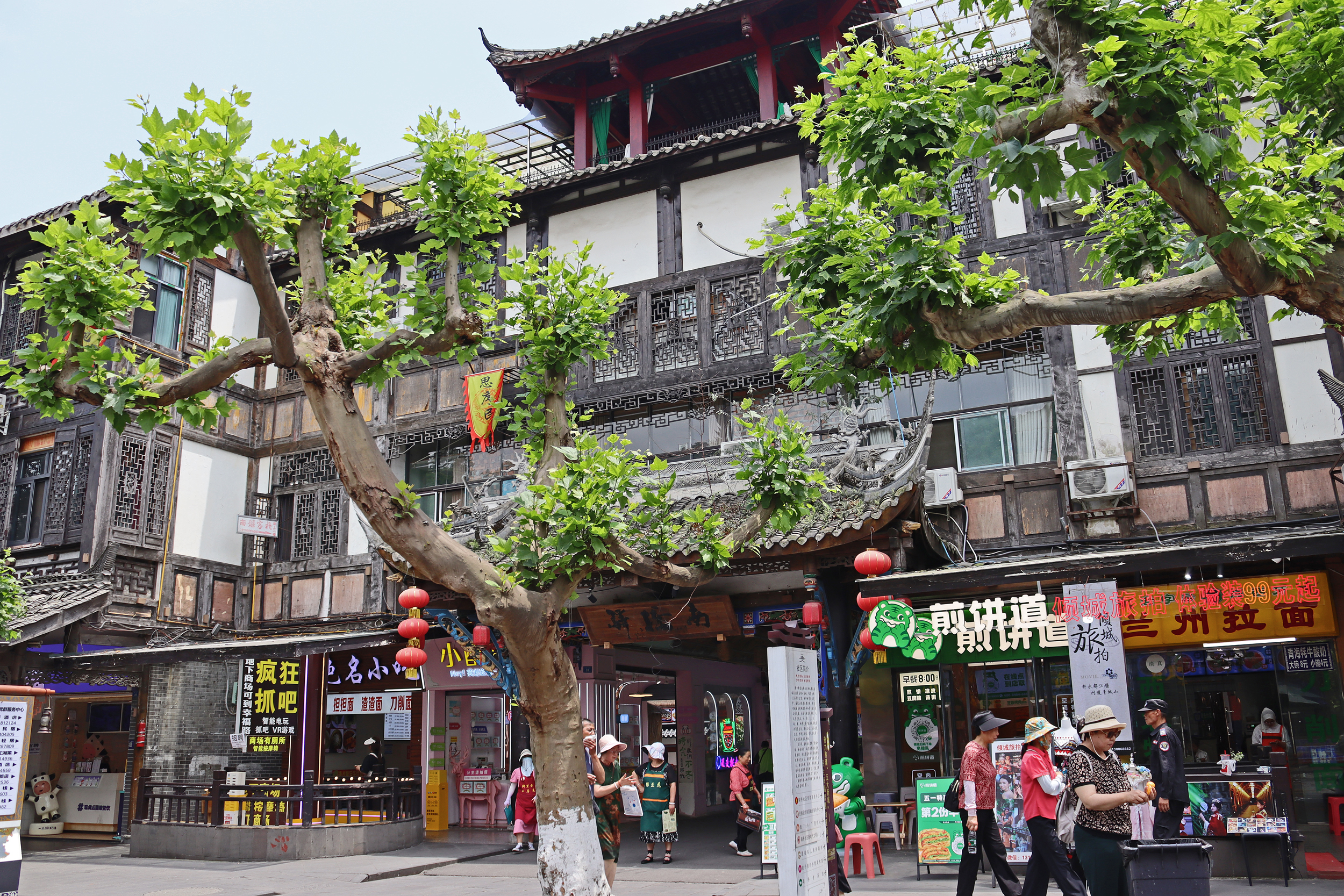


Dujiangyan blue tears/Minjiang River
I already touched upon seeing the Dujiangyan blue tears on my first evening, but I then went and saw them on most evenings I was there haha XD But it’s so pretty and I was just fascinated by the fact that to the eye, it looked like a green/turquoise colour, but as soon as you look through a phone/camera, then it’s blue! But the river is also great to see during the day and you can really see and hear the force behind it – it’s one loud river. It also passes right through the centre of Dujiangyan, so if you visit, it’s pretty hard to miss it. The river is of course part of the Irrigation System, and you can see a lot of the mechanisms used to divert and adjust the flow along the sides of the river at various points through the city.
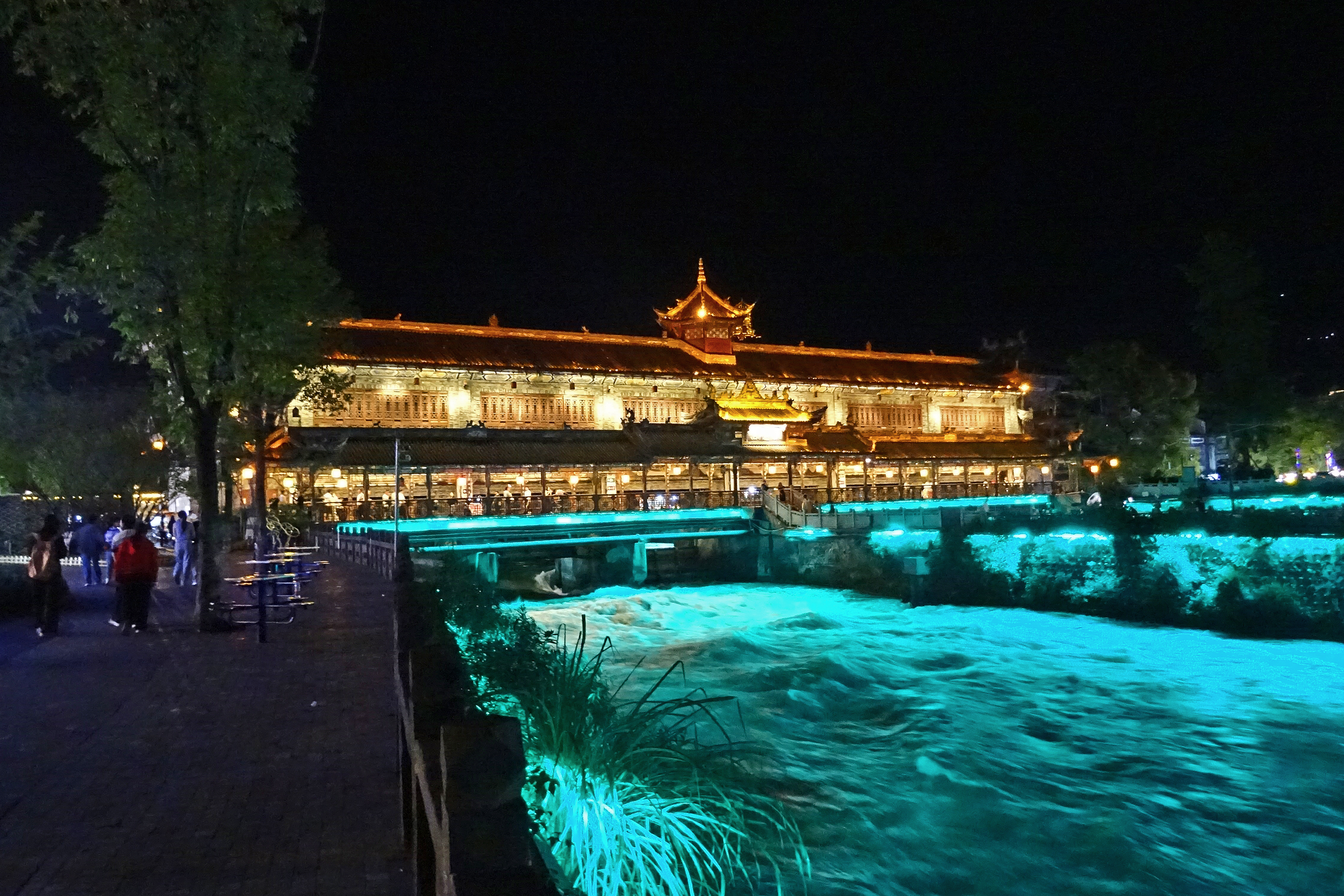

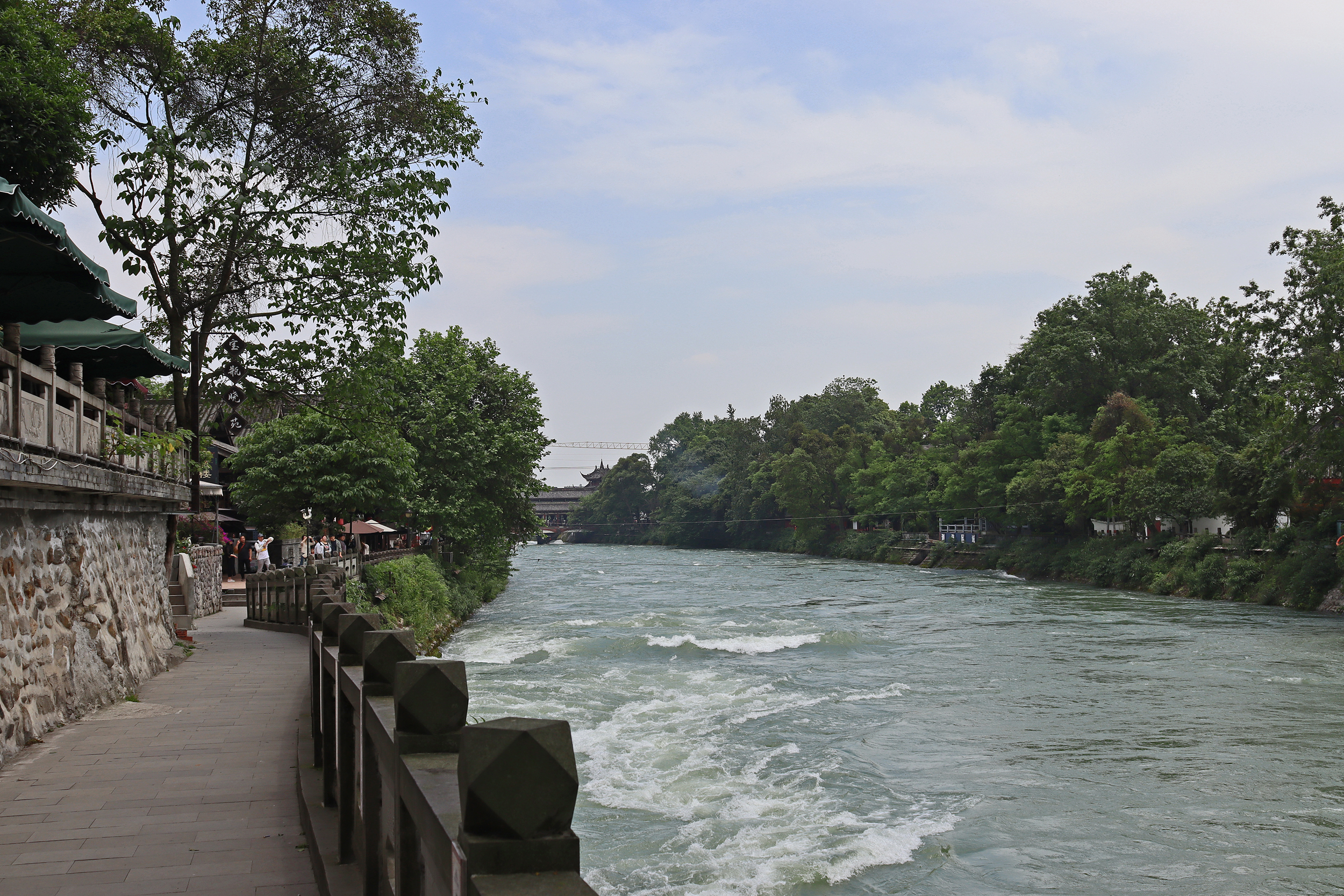
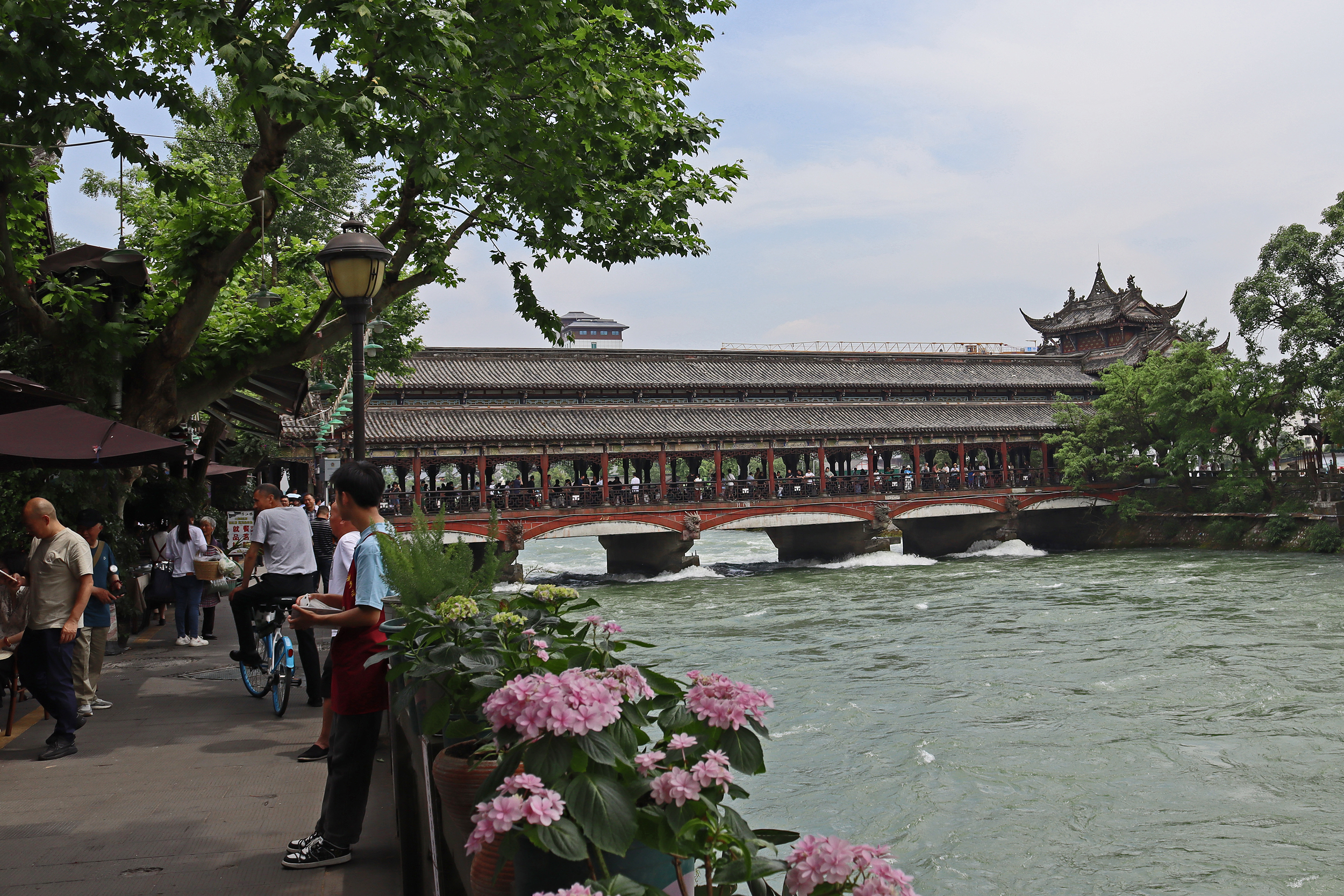

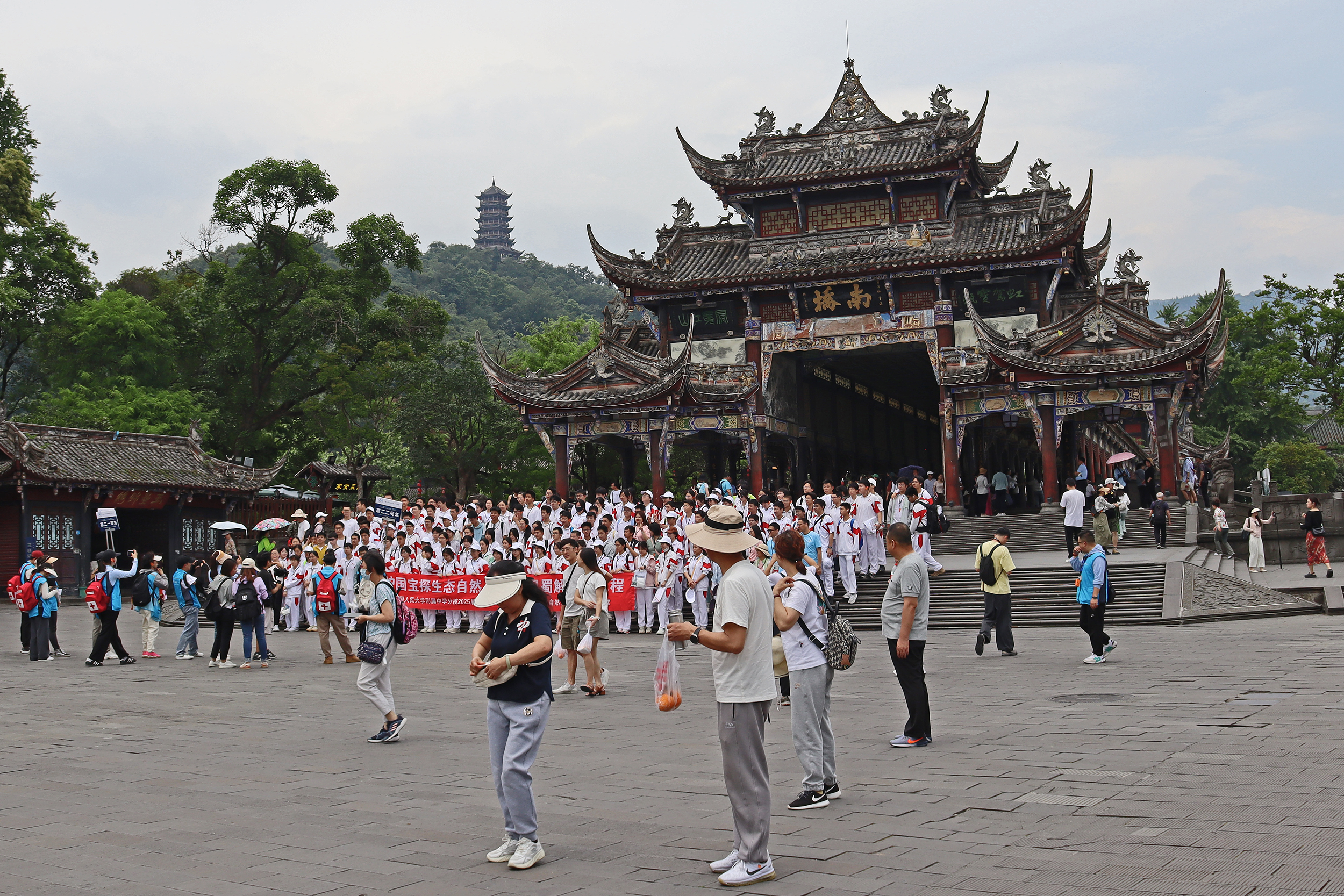
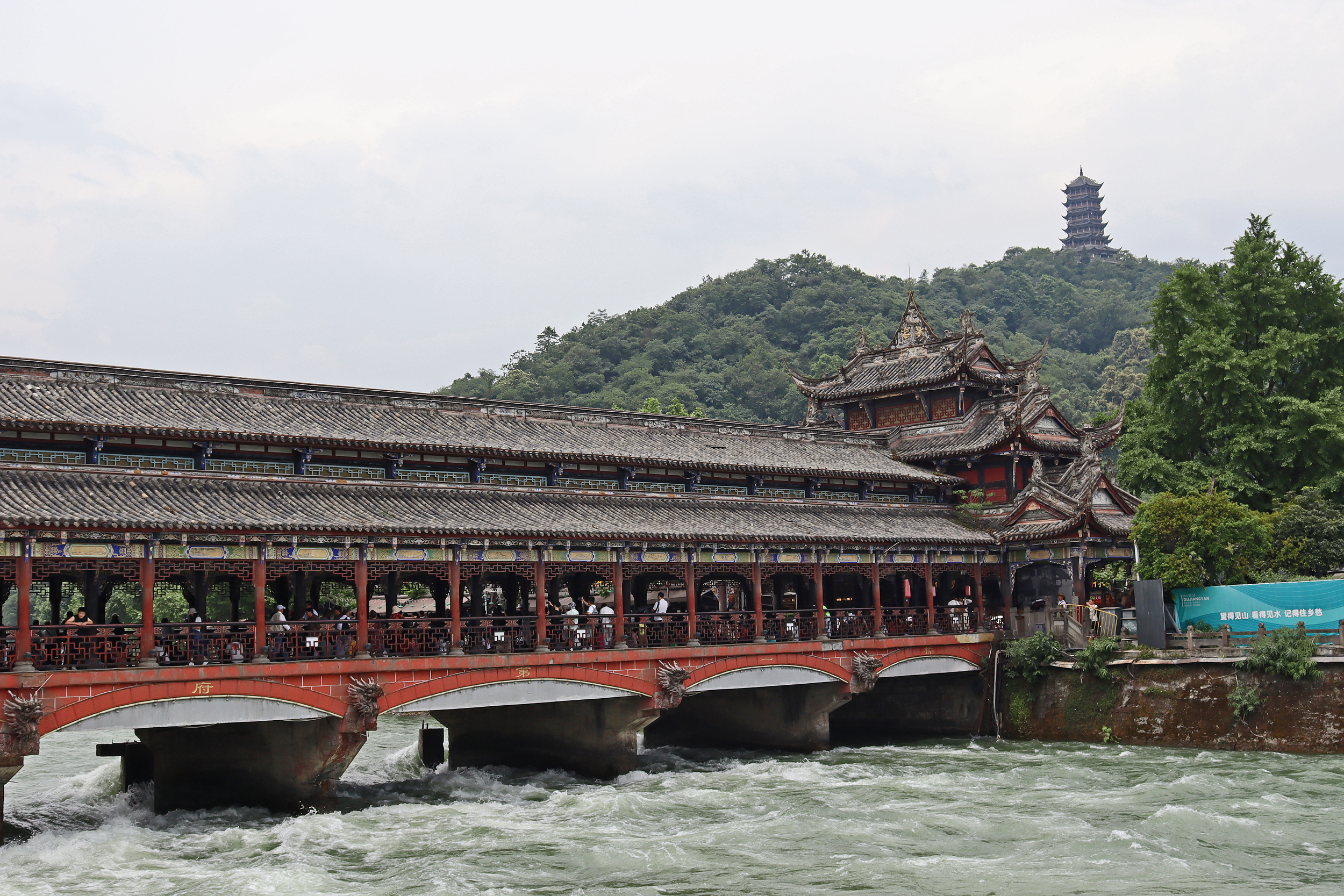
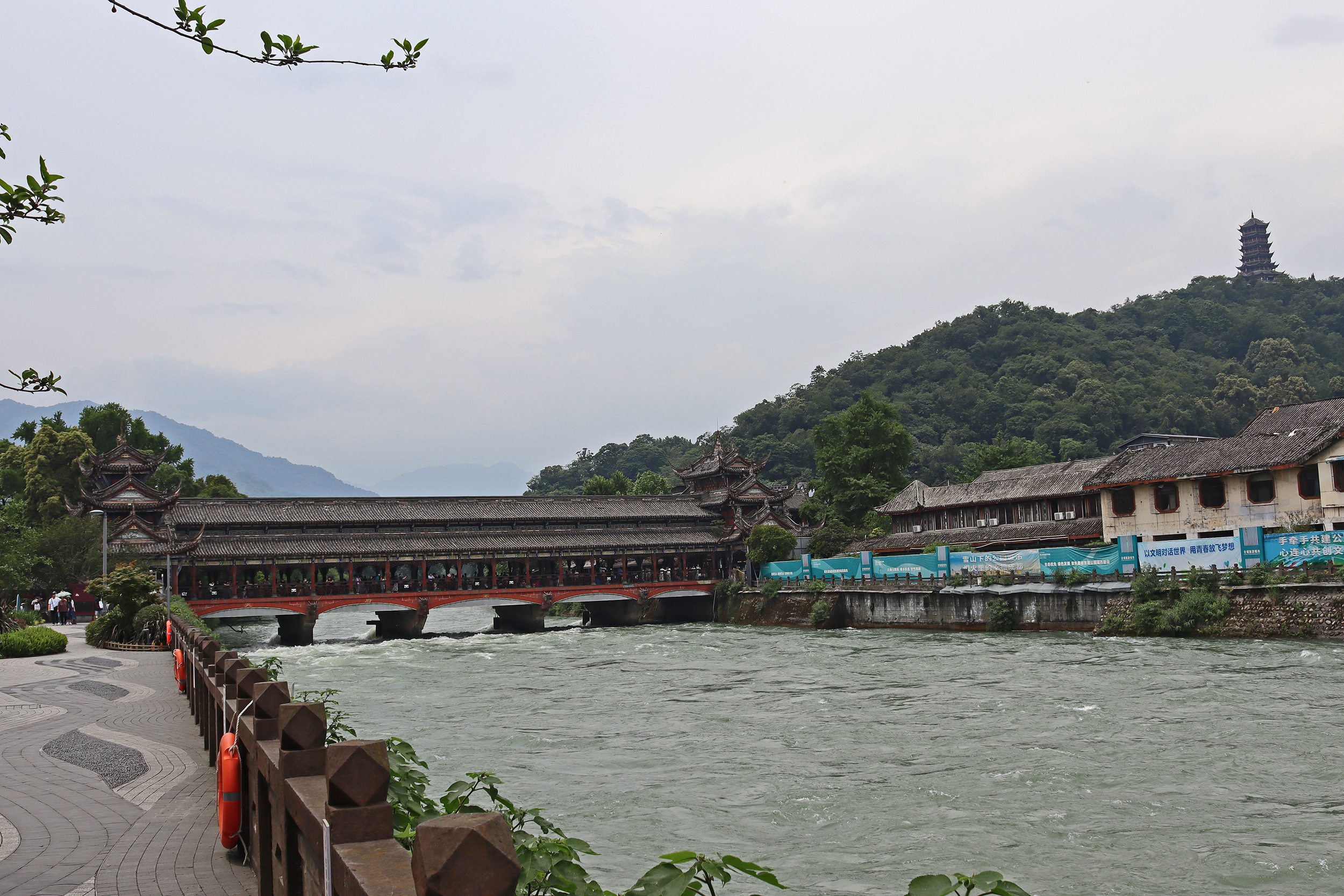
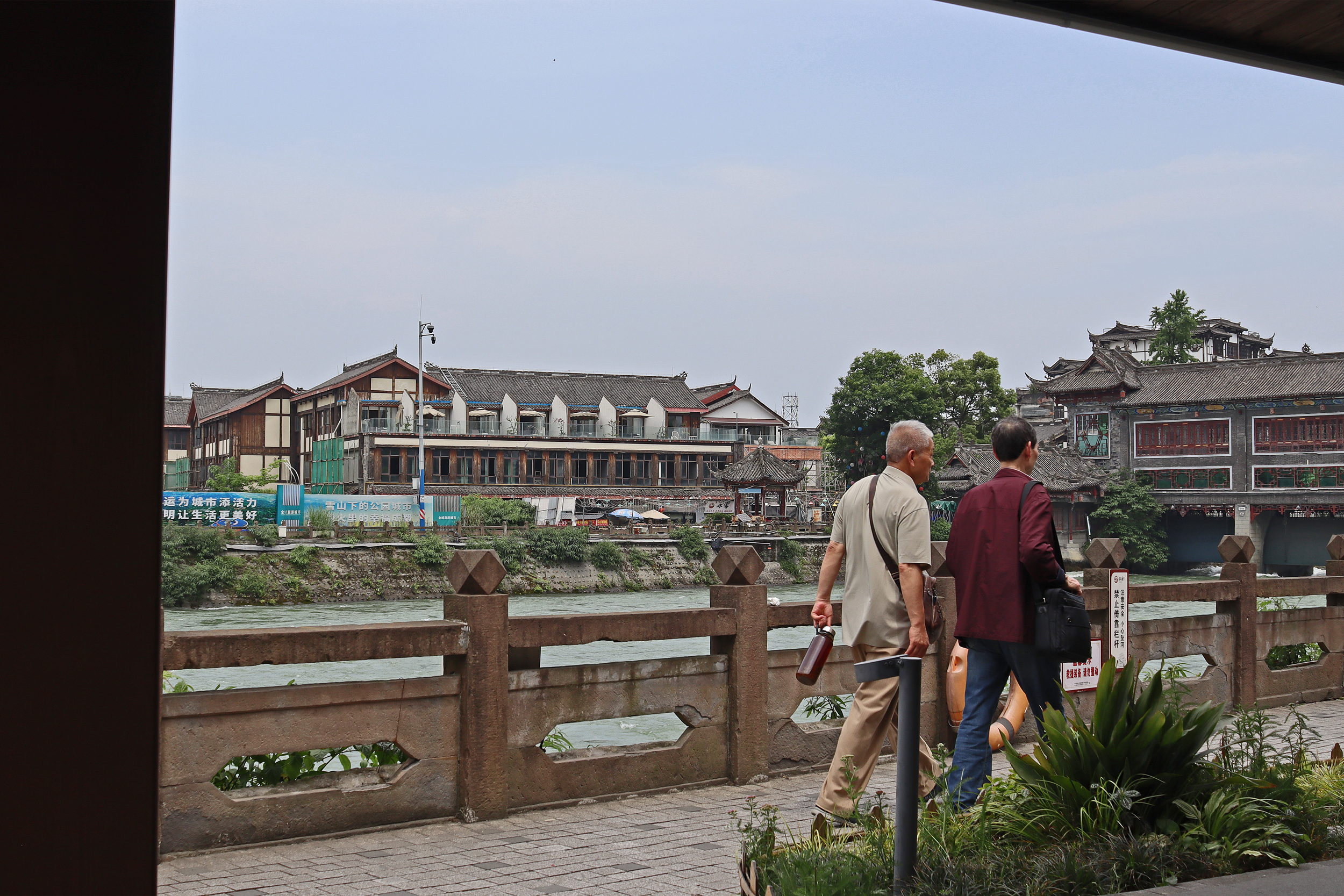
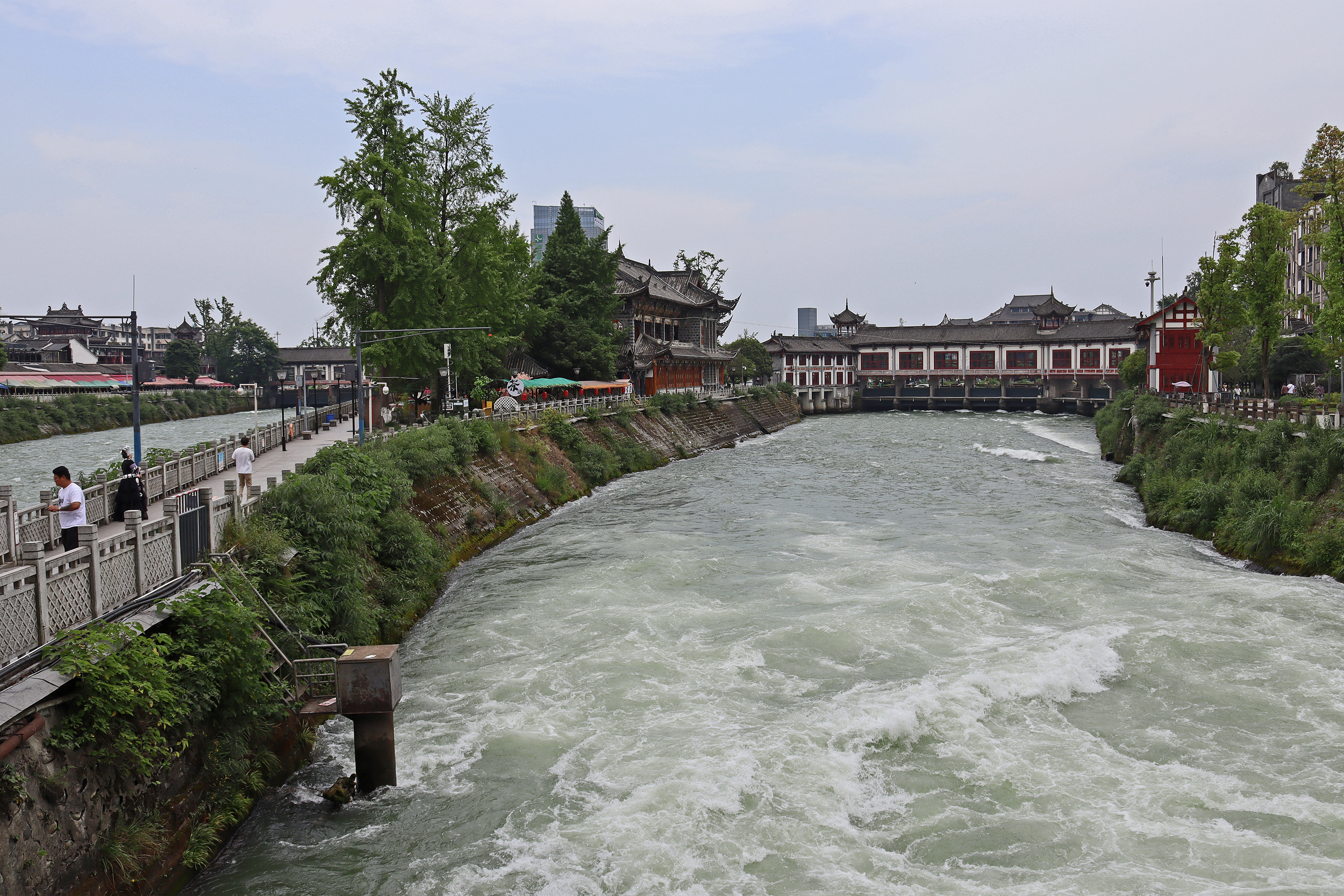

The Dujiangyan Irrigation System
Besides the pandas, the Irrigation System is the next main site that people visit in Dujiangyan. I visited in 2017 very briefly and we just did a quick walk through the main area near the gate and crossed one of the suspension bridges. This time I had factored in a whole afternoon to explore the area, which was much needed because it’s huge! I didn’t even see everything that was there because I was getting pretty tired in the heat and it’s a lot of walking. The Irrigation system was originally constructed in 256BC to prevent the numerous floods that happened and to irrigate the local area, and is still used for this original function today. It was listed as a UNESCO World Heritage Site in 2000. The site has a few suspension bridges across the waters and they certainly make for the more scenic spots in the area – the Anlan bridge is the most famous and leads you across the water and towards a maze of temples and historical sites up the mountain side. There is a handy map online from TravelChinaGuide that I think clearly highlights everything to see – I didn’t get to any of the sites on the bottom right section of that map, so still more for me to check out next time.
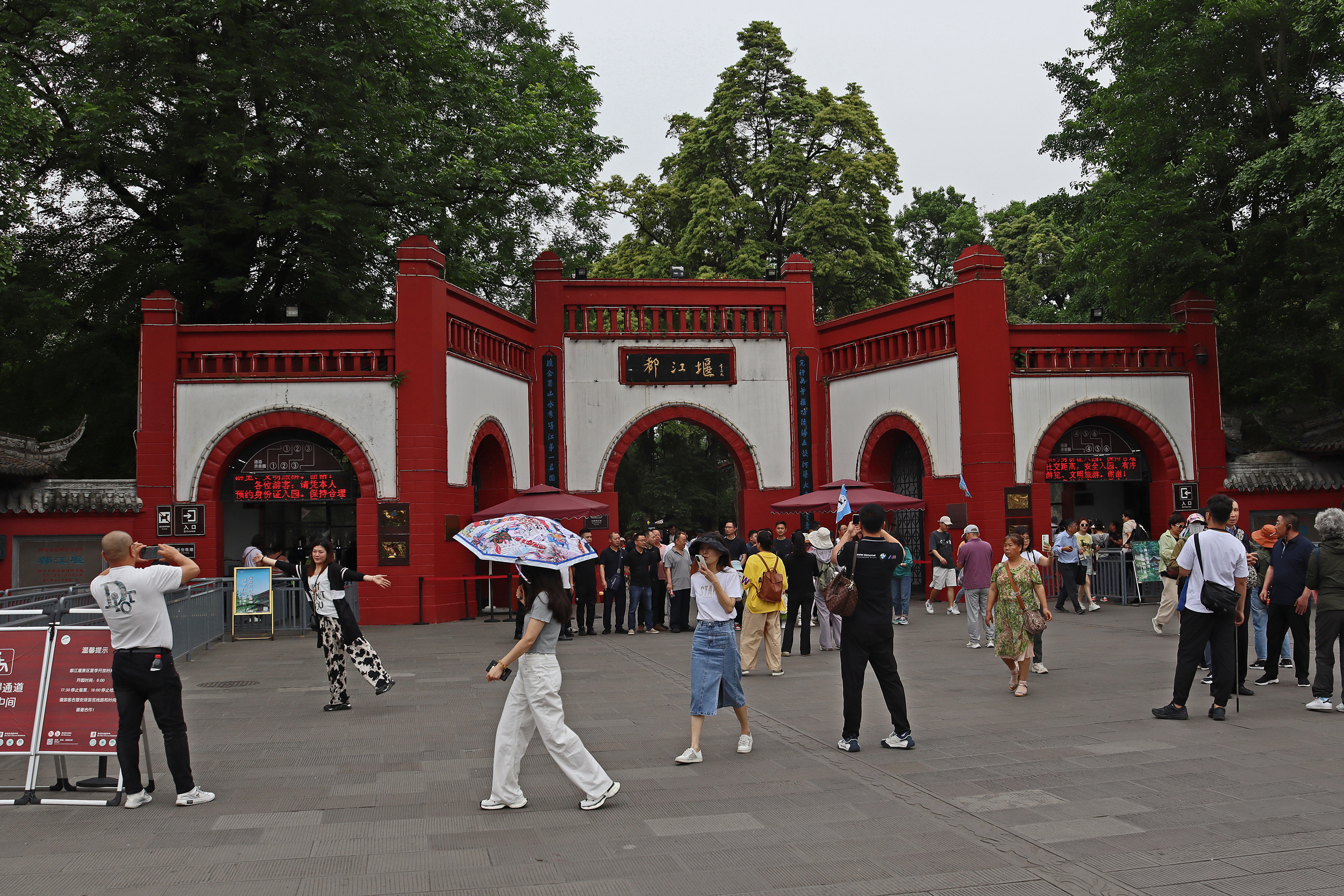
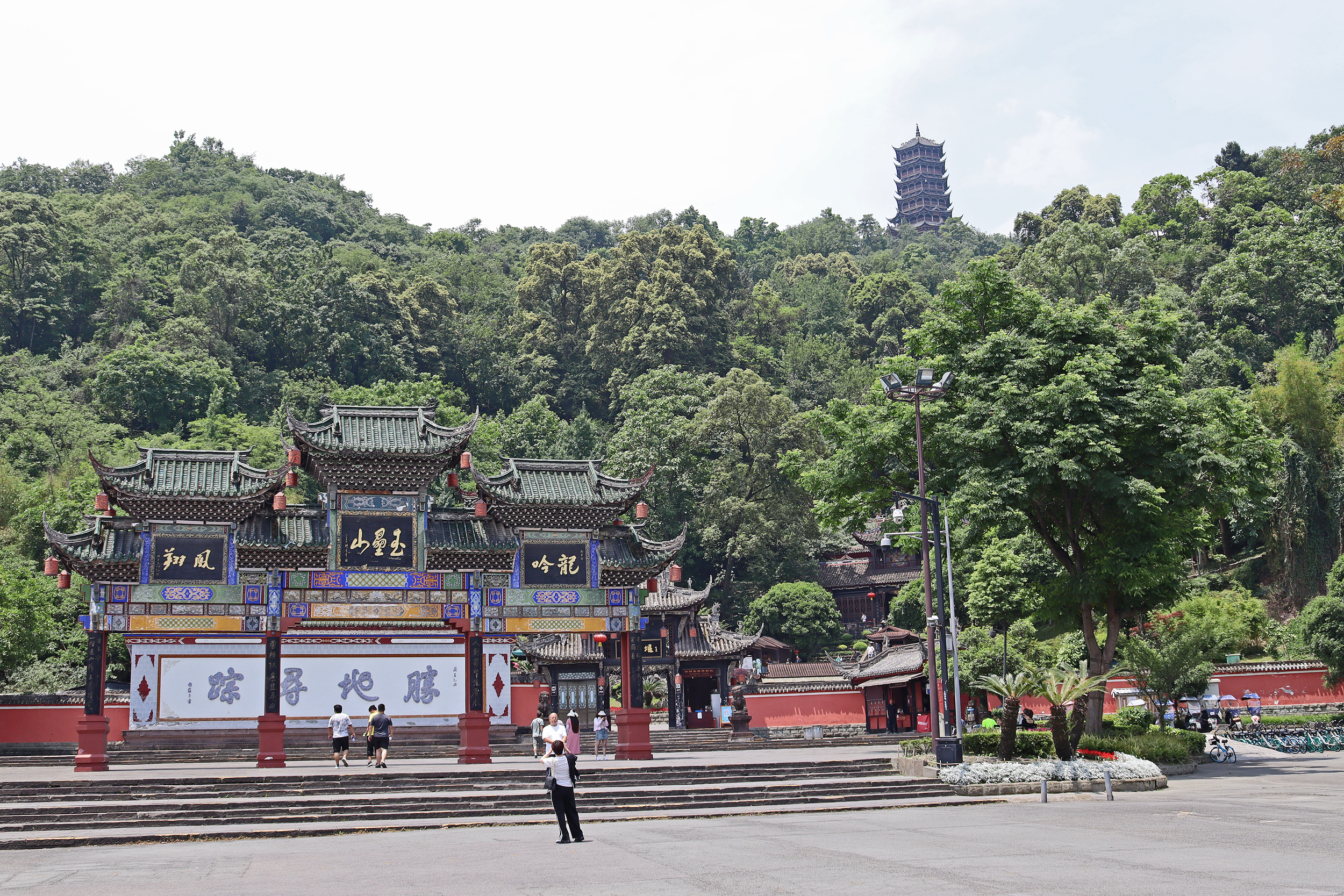
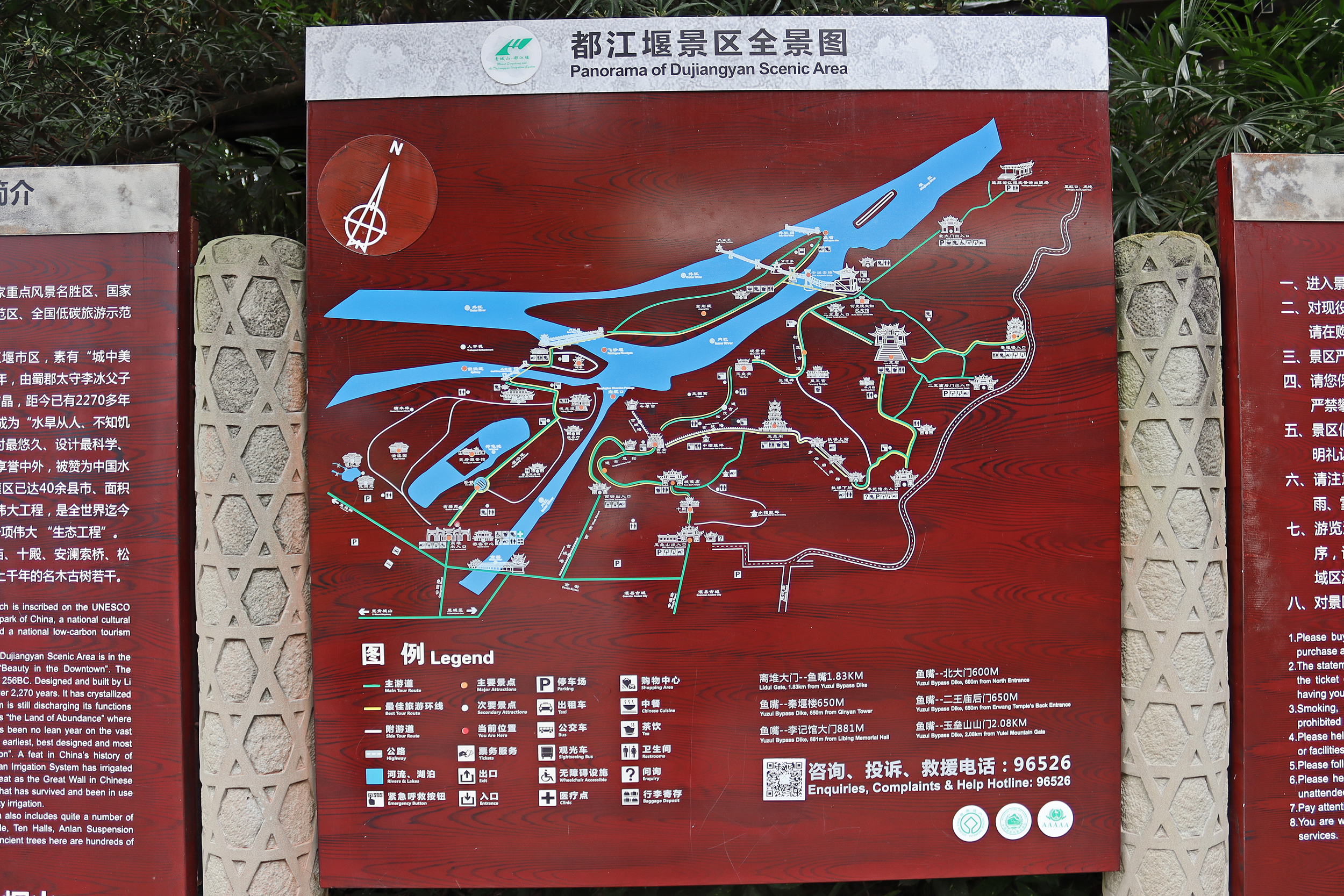
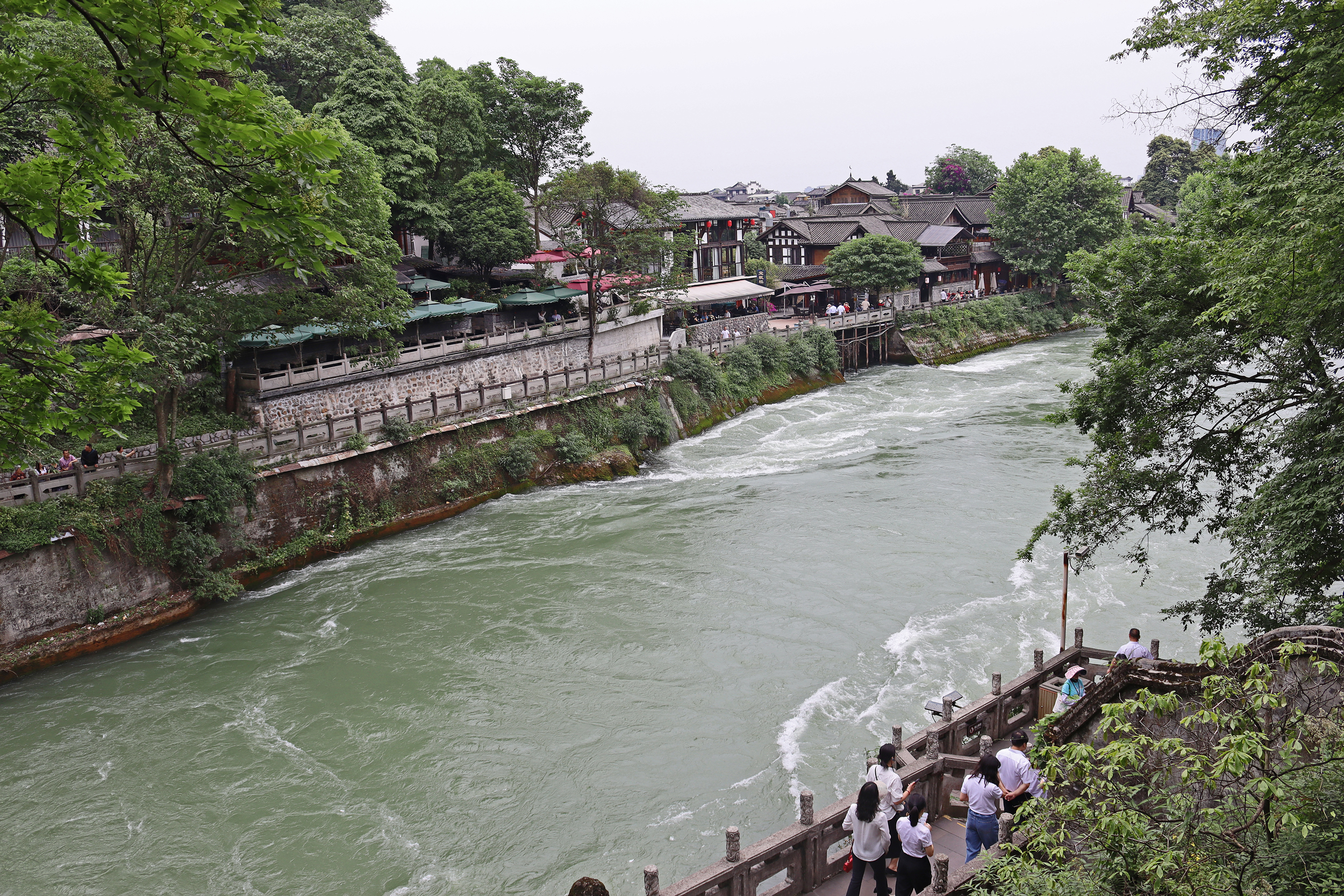
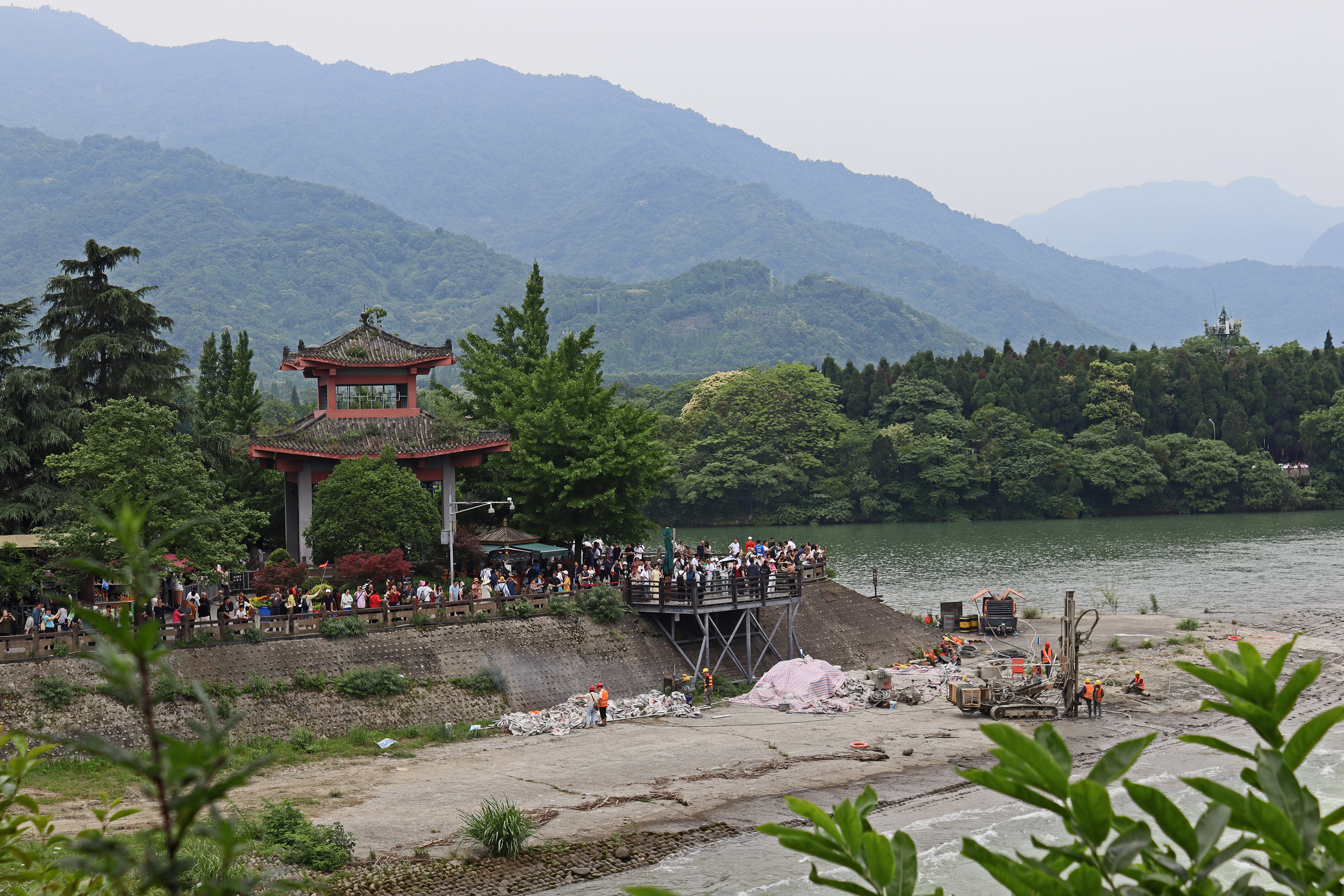
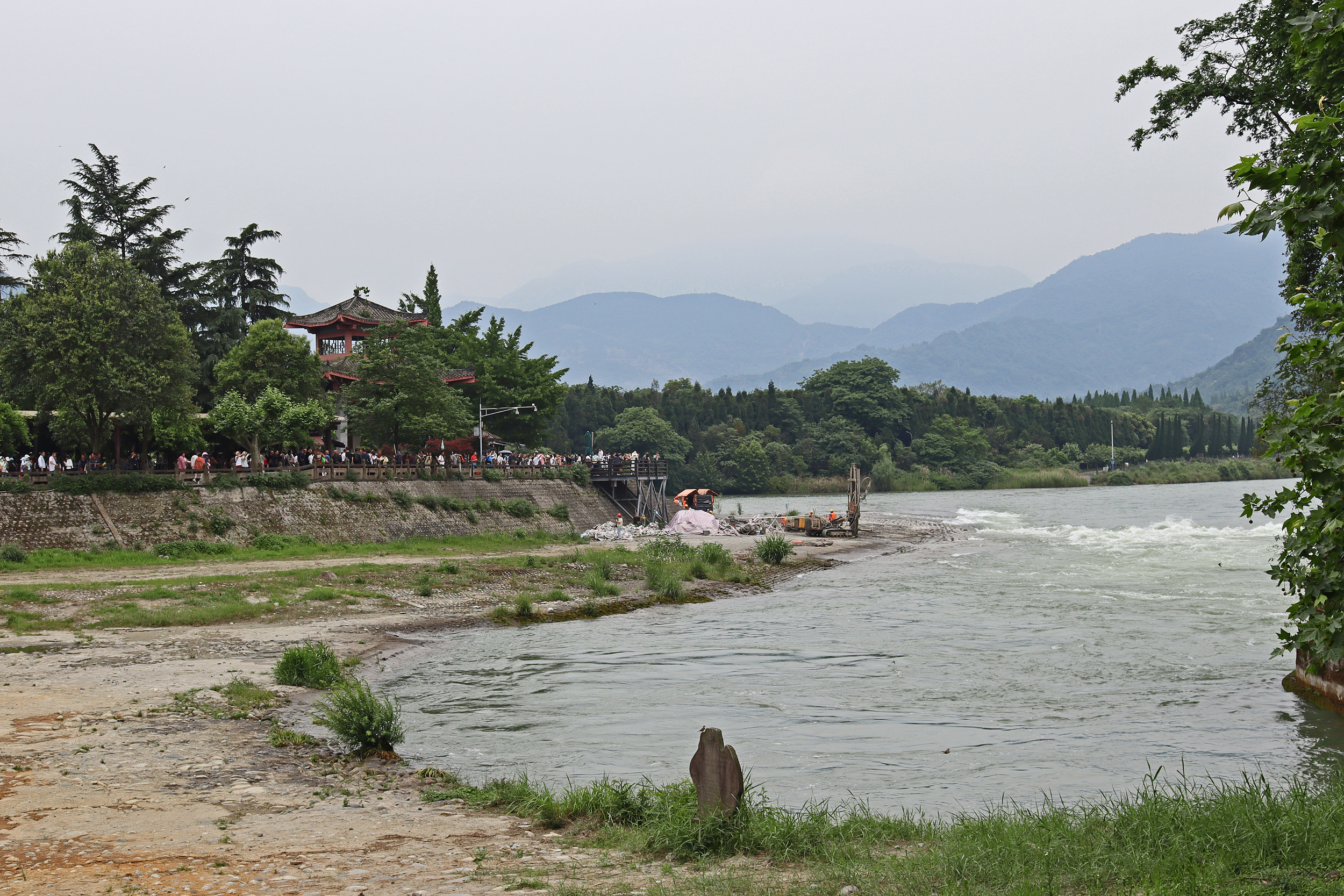
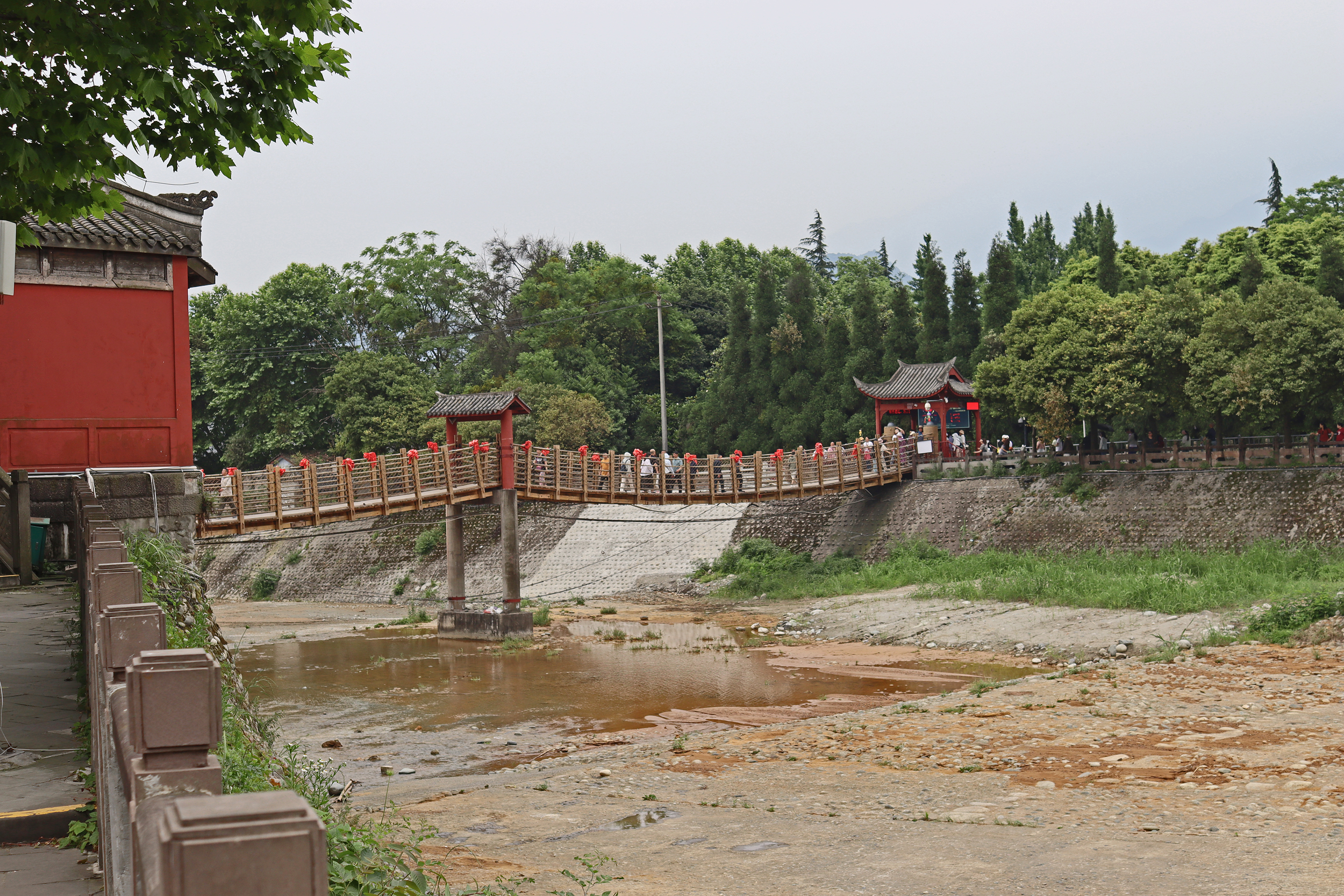

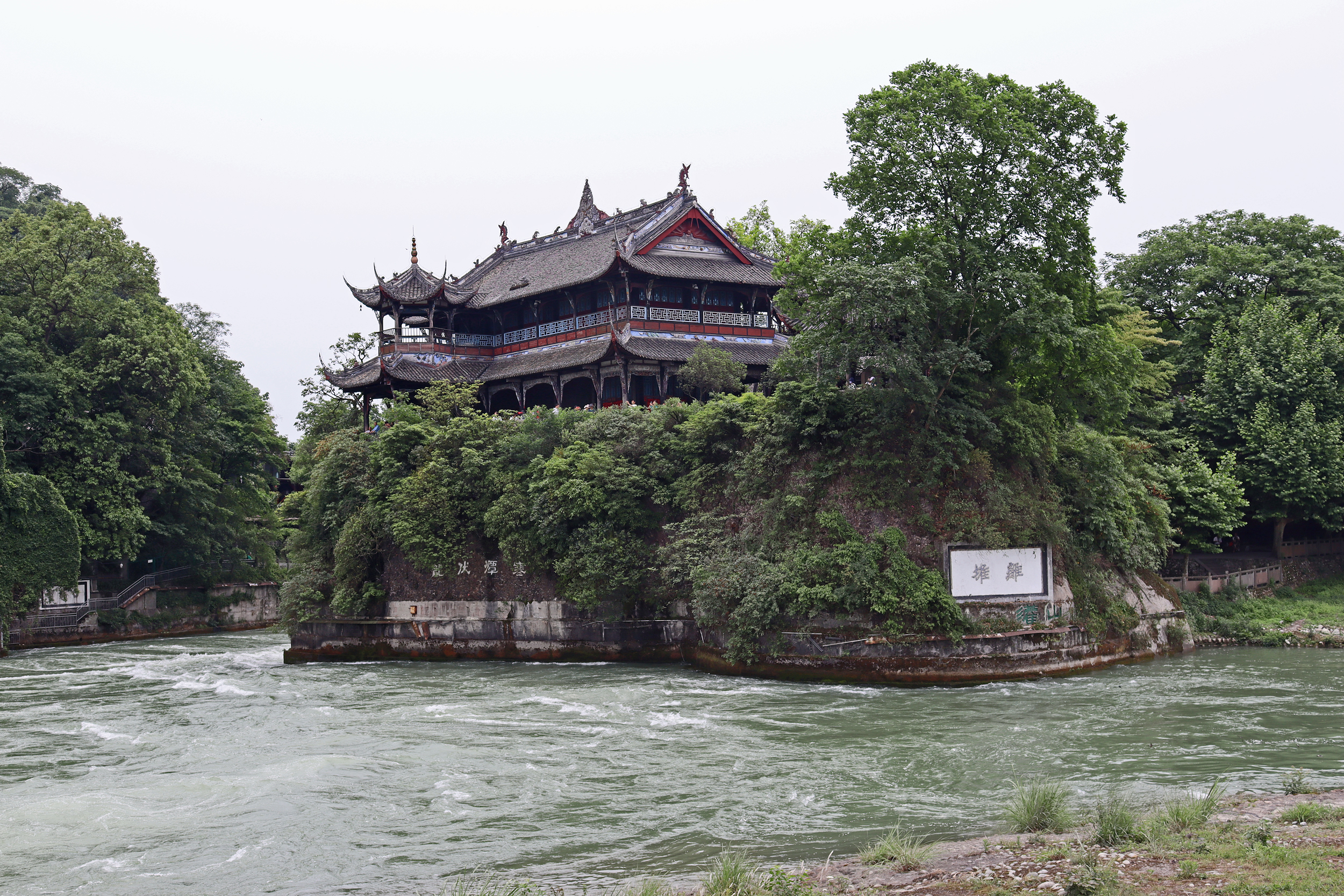

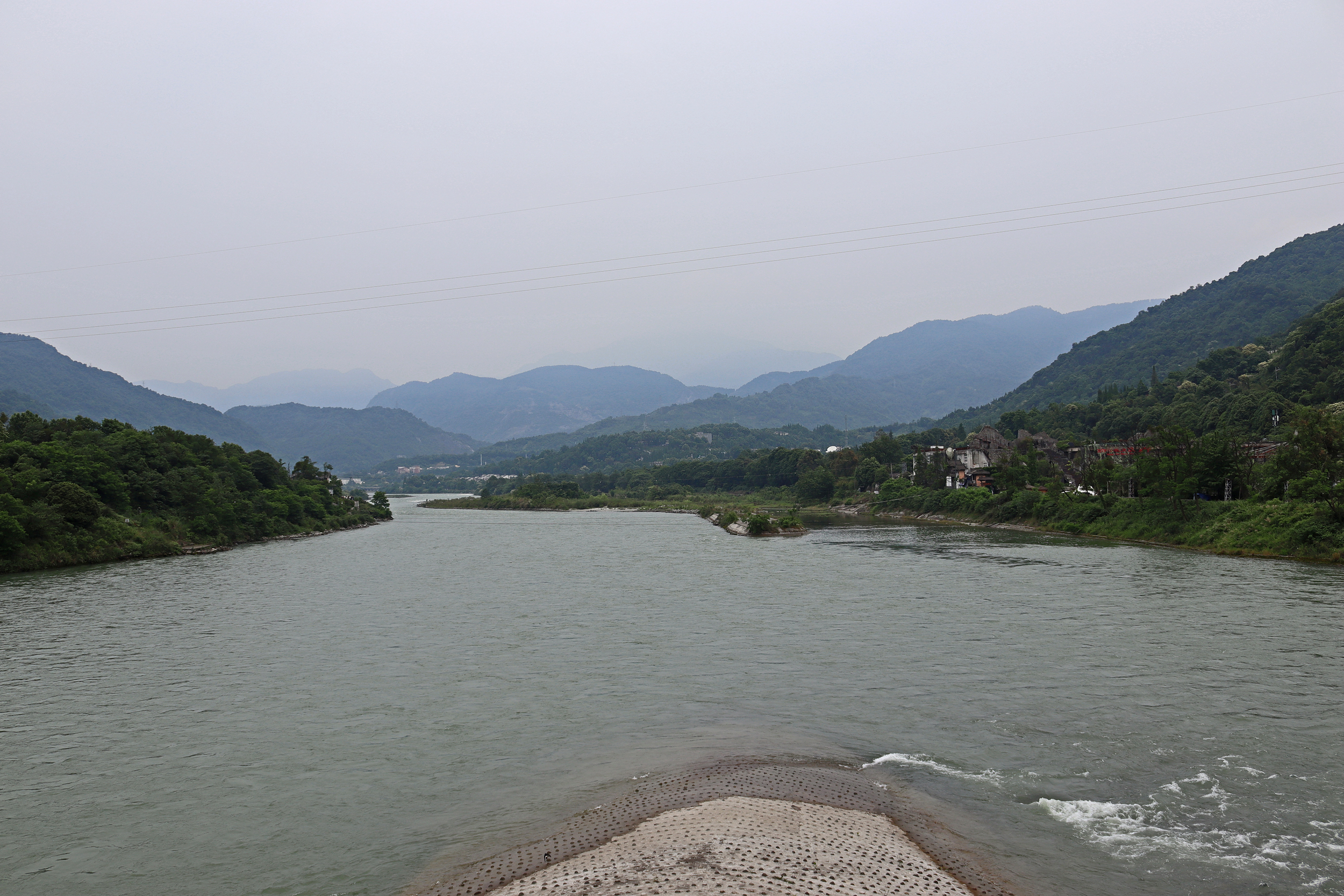
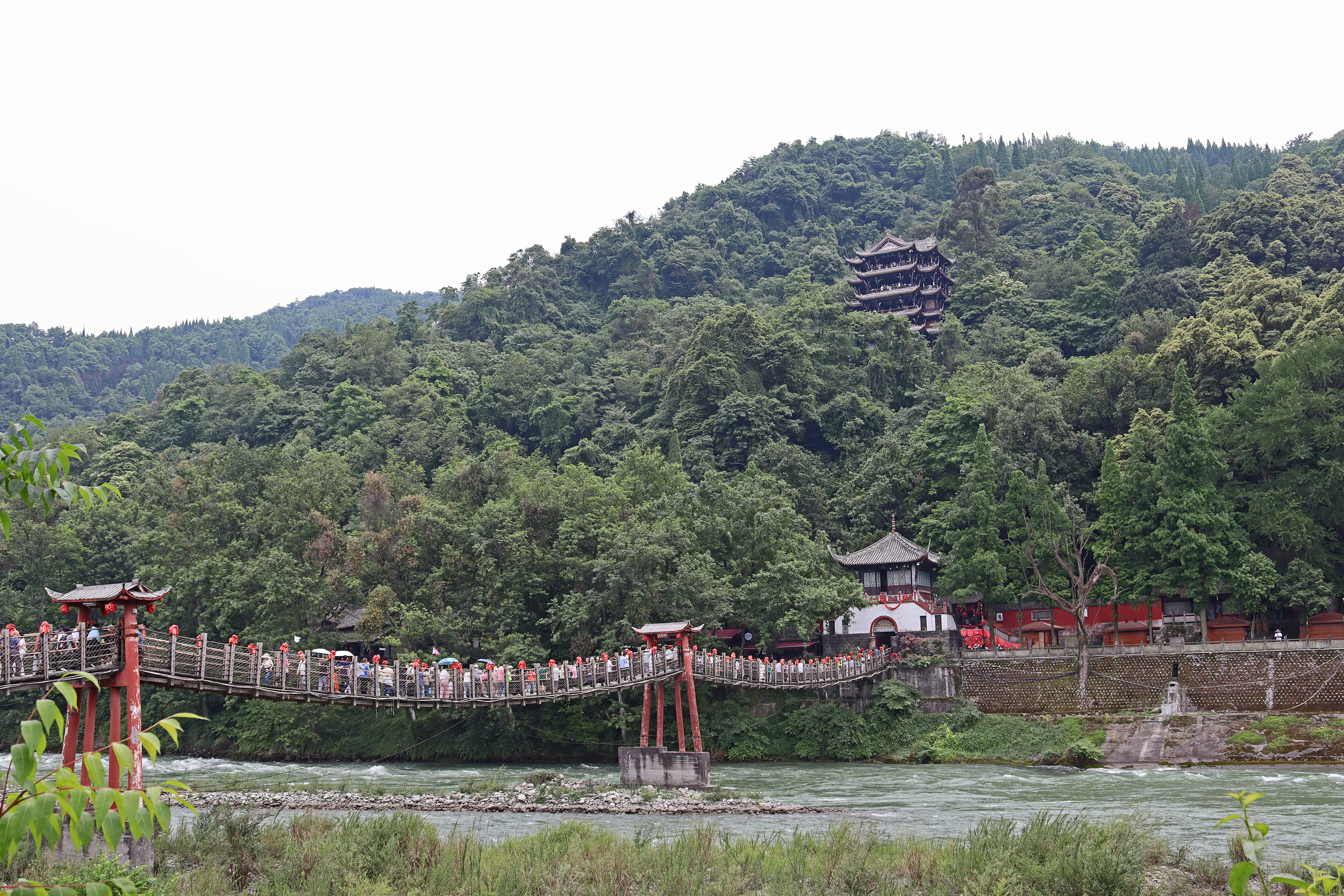

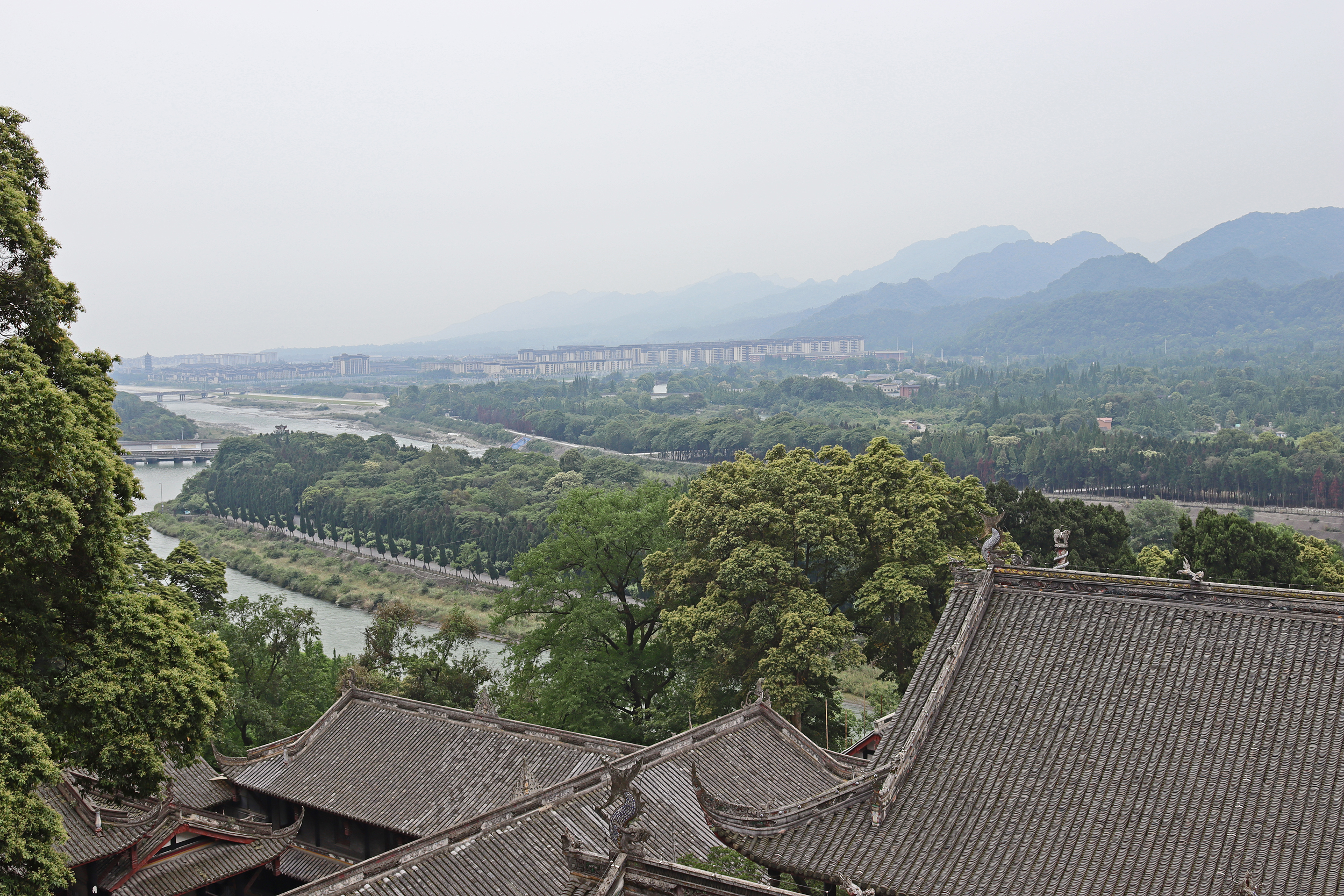
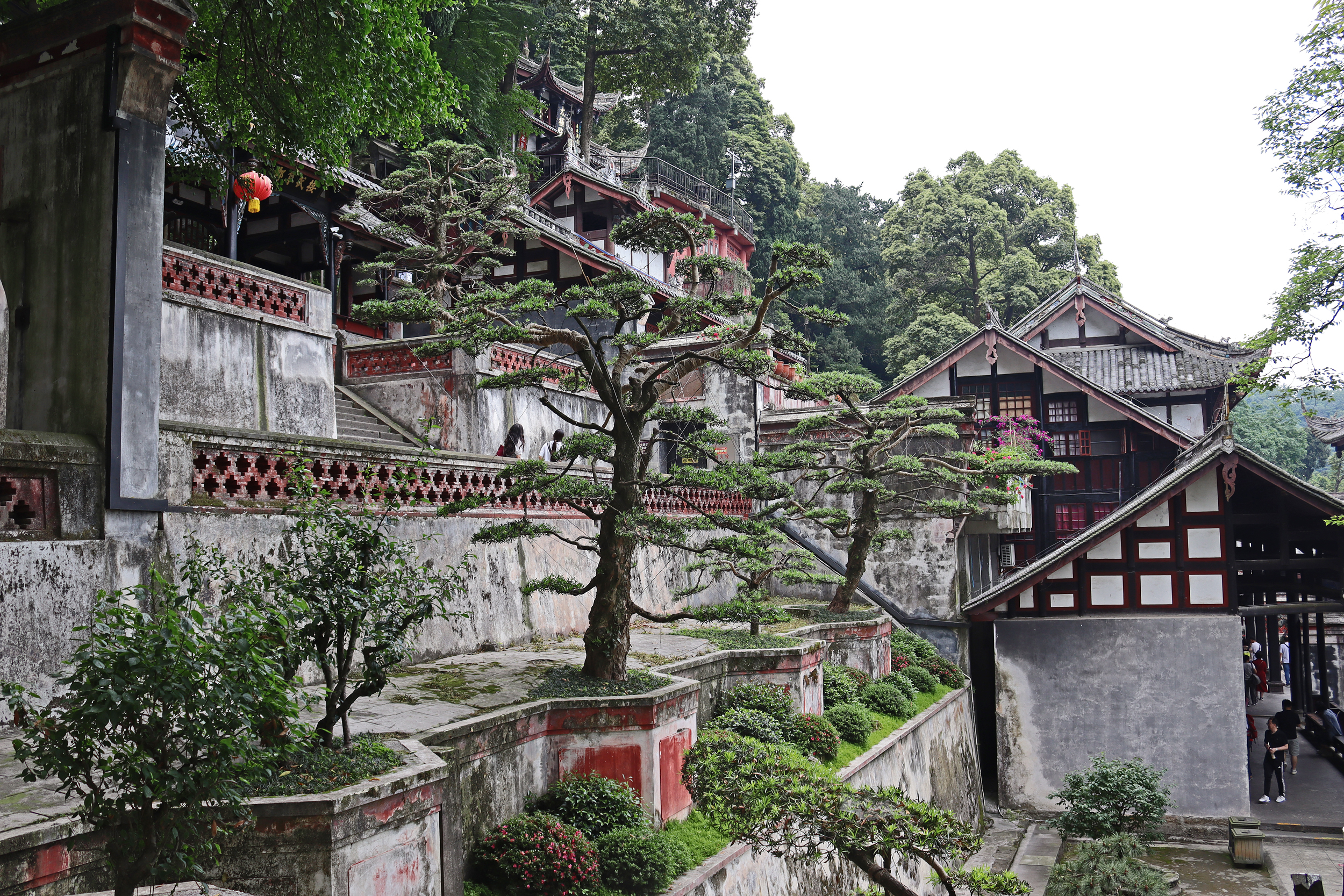

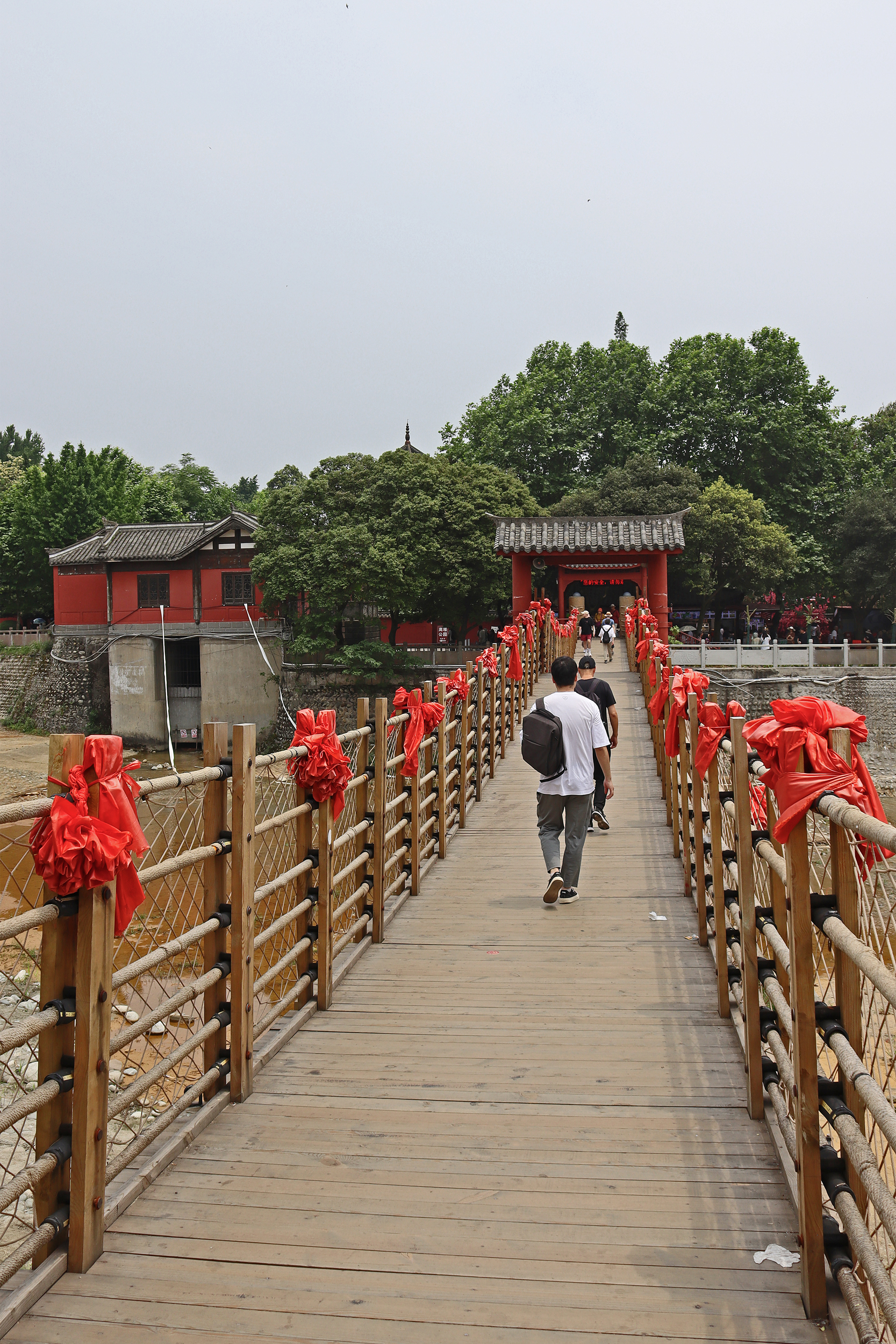
Dujiangyan City Strolls
The city is very walkable, so I enjoyed just walking along and seeing where the streets would take me! It’s a lively city at night, with plenty of restaurants and shops open, and lots of dancing – I loved walking near the Liduiyuan train station in the evenings because there was a huge group of people dancing and enjoying music, it was so fun to see.
